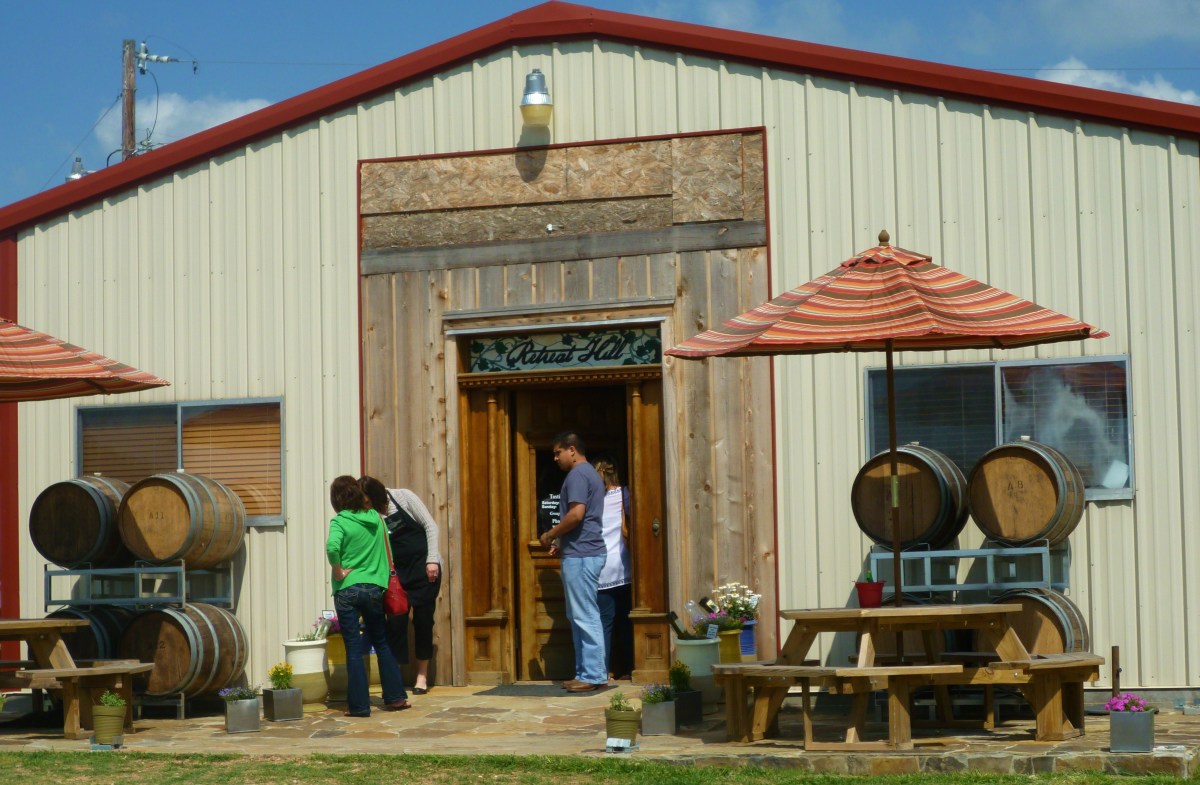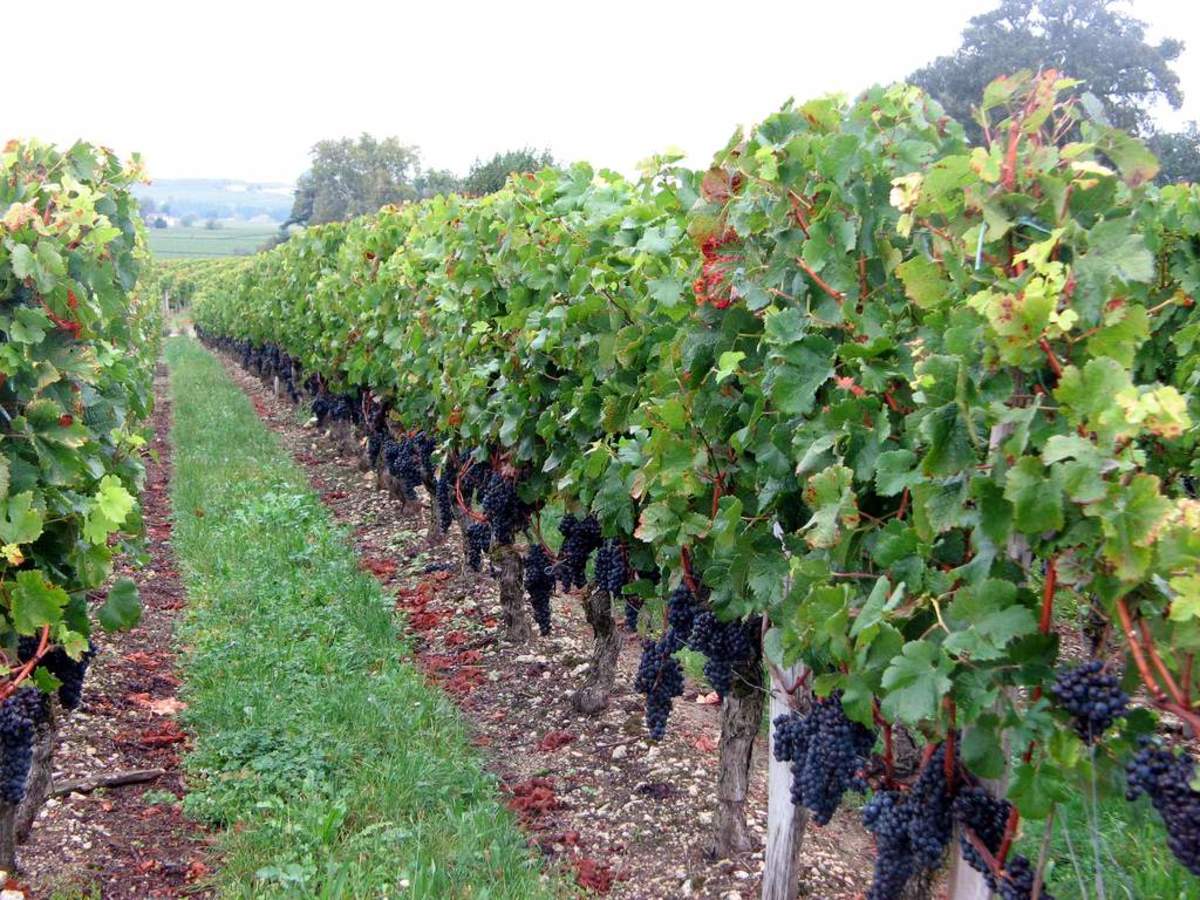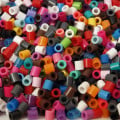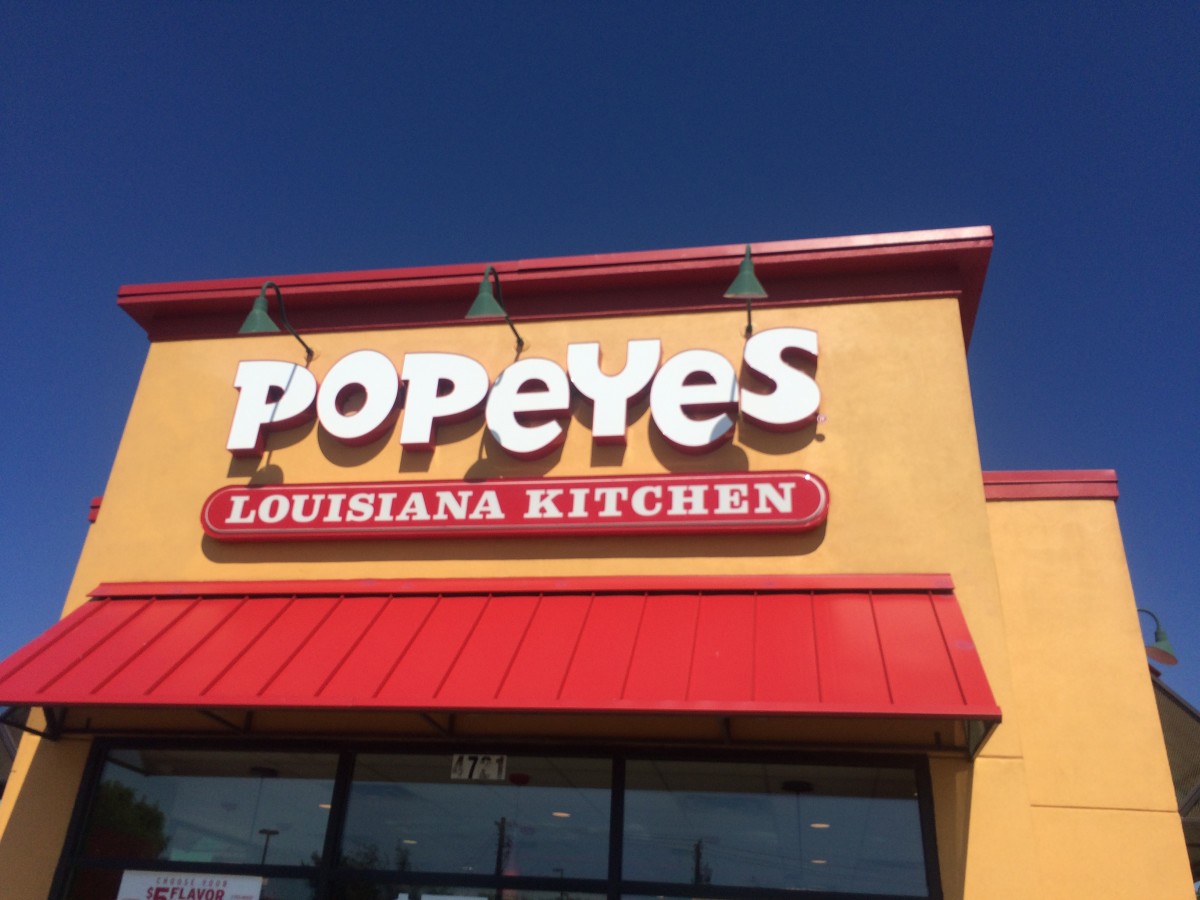In Wine Country-Napa/Sonoma
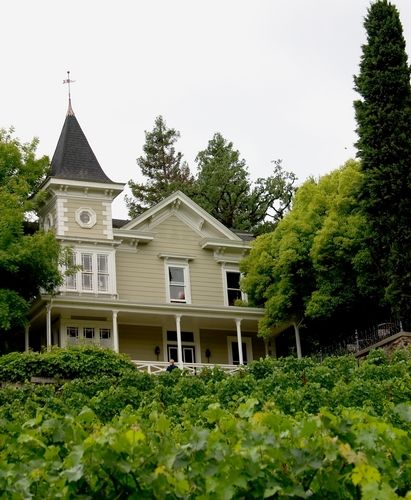
I love reading about interesting things that people do In Wine Country-Here goes!
I want to bring some faces and stories about what people do to make wine country work. Have you ever thought about how barrels are made and where does the wood come from? What about the struggles of people to start up a dream...like a winery or vineyard.
Well I want to tell you about some interesting people and what they do.
www.symtrekpartners.com
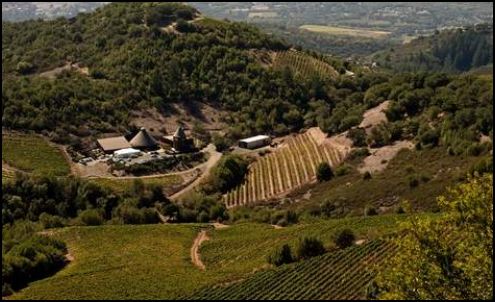
Just When You Think There Isn't Room For Another AVA In Wine Country...
Here comes Moon Mountain AVA
On October 1, 2013 the TTB (Alcohol and Tobacco Tax and Trade Bureau) that regulates issues of wine, just announced the designation of a specific area in Sonoma County, CA (which lies within the Sonoma Valley AVA) as its own AVA (I guess that would make it a sub AVA). In total there are now 16 AVA (American Viticulture Area's) in Sonoma County. Napa has 15 AVA's. By land mass and land area planted with vines, Sonoma is much larger than Napa but still does not have the same number of wineries.
To appreciate the significance of AVA's it really isn't important to understand the intricacies between when trying to compare Napa versus Sonoma. Simply, Napa County has a primary AVA called Napa Valley and that AVA has 16 sub AVA's and Sonoma County is not an AVA but has about 16 AVA's of which the new Moon Mountain AVA lies within the Sonoma Valley AVA. The Russian River Valley AVA is the largest.
The new Moon Mountain AVA within the Sonoma Valley AVA encompasses 17,600 acres and is home to 11 wineries that can now label their wines as coming from Moon Mountain AVA. This assumes at least 85% of the wine comes from grapes grown within that AVA.
Even a cursory understand of AVA's can add a lot to understanding wines. We all have wineries whose wines have become our favorites, which is why wineries work so hard to maintain flavor profiles from year to year; customers learn to count on a certain flavor and aroma.
AVA's are designated based upon a very unique set of parameters-soil, weather, topography to name a few. The effort to get an geographic area designated as an AVA takes years to accomplish, not to mention a lot of money. The effort involves surveying, taking soil samples and analysis, accumulating years of weather data and elevation detail. AVA territories are not respectful of city boundaries or county lines; it is all about where the soil, weather, details remain consistent.
To a wine consumer, wines produced in a specific AVA have a profile that can be very distinct. Those distinct notes are infused into the wine, from within an area, due to soil, temperatures, growing season fog patterns, rain fall, and seasonal pattern. So, try experimenting with wines based on AVA areas.
"Wines that are grown on the hills and the top of the mountains are distinctly different and usually a higher quality than what you can grow on the valley floor," said Christian Borcher of Repris Wines in an interview with The Press Democrat. Good excuse for a glass of wine.
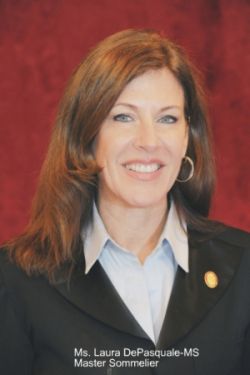
Sonoma and Napa...A Wealth of Wine Talent
Use a Master Sommelier to your advantage in Wine Country
By my count there are 31 Master Sommerliers (MS titled) in the general Bay Area; assuming you count San Jose as part of the Bay Area. Specifically, Napa and Sonoma Counties have 66% of the 31. With slightly over 200 Master Sommeliers in the World, this is amazing! This speaks volumes about the quality of dining in Napa and Sonoma.
If you count all MS's in California they probably represent 25% of all Master Sommeliers certified in the whold World. This is a collection of the greatest minds in wine; a veritable enclave of the scholars of wine. How's that for an imagination?
Individuals with the MS title offer great opportunities beyond just a nice dinner, they can be used for corporate team building exercises, private tasting experiences, wedding receptions, private functions, and the list can go on and on.
Master Sommeliers are unique as they have the knowledge of wine that is unmatched and a very deep understanding how to serve wine relative to the consumer. This knowledge and talent is available to all for the price of a bottle of wine.
Cheers! And come to Wine Country to experience a Master Sommeliers service!
Power of Sponsorships
The Napa wine industry is getting involved with the America's Cup yacht races and is now named the Official Wine Producers for the America's Cup. Look close and you will see the Napa brand on the America's Cup yacht.

People of Wine Country-A glass person.
Custom glass is top of the line.
I recently ran into a lady in Wine Country who has made a career out of glass. Not just any glass but wine bottle glass. Ms. Erica Harrop is the Owner of Global Glass. Today she specializes in custom wine bottles.
Custom mold bottles are the pinnacle of what is possible in wine and spirits packaging. It means that you can ask for a really creative and specific shape that hopefully you have dreamed of for a long time and now you can have it created. Most of the time packaging designers are engaged but sometimes Erica works with customers on existing concepts and they modify to create something totally new.
Minimum needs are often requested by customers at only 500 to 1000 cases a year but factories require production runs closer to 2000 cases minimum. There are many examples where wineries will make excess glass and use if for 2 or more years because they really want the shape that will make their package work.
Mold costs are dependent on a few criteria but wineries should plan to pay from $10,000 to $25,000 and sometimes more if you work with a larger factory or if your design is really radical. Radical is defined as requiring very complex molds due to curves and angles. Examples are flat sided bottles, diamond patterns on the surface, or other really non-symmetrical options.
In addition, sometimes you will see a glass wine bottle where the winery's logo is molded in the glass. Nice touch if the logo is not overly comples.
Now for 20,000 cases of glass, you won't purchase that here in the US as minimum requirements are more like 100,000 cases and up. For bottles made in Asia or Europe at this quantity, the pricing may be consistent with standard bottles of the same weight at that quantity. So it makes sense to consider a unique shape if you are so inspired.
Erica has a good pedigree in the wine industry and in Napa:
Remy Martin- Facility Manager and Director of Brandy making
Demptos Glass- President 1993-95
Saverglass- Grew company from small subset of Demptos' offerings to a major glass provider in the US and North American. Saveglass is responsible for most custom molds used today.
Global Package- Import custom glass company.
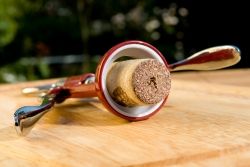
If It Isn't Broke Don't Fix It...There Is Value In Tradition
Natural cork versus Screw cap versus Synthetic plugs (that last one was a cheap shot).
Closure research...limited but interesting.
Last week it was reported in The Modesto Bee the UC Davis had undertaken a $16,000 study on screw cap versus cork closures for white wine. The white wine, all 600 bottles of same, was being furnished by PlumpJack Wines in Napa. What makes this interesting is that PlumpJack uses both cork and screw cap closures in their sauvignon blanc wine bottling.
The research will use tomography (CT scanning) to determine oxidation of the wine every three months. They are using real cork, aluminum with a poly seal cap and synthetic cork (an oxymoron if there ever was one).
After they measure color changes to the sauvignon blanc quarterly (4 times) by closure type, they will then have an expert sensory panel taste the wine and note aromas also.
The ying-yang of this whole research is that wine needs to have oxidation to develop aromas and taste complexity. Further to this philosophical principle is that all closures have advantages and disadvantages. Bottom-line, the word sensory has an additional application besides the normal sensory attributes of taste, texture in the mouth, sight in the glass and smell; it has to do with the look and feel of the natural cork in the hand.
If oxidation was so bad, why do winemakers, since time immemorial, use oak in barrel aging? Oak is probably more porous than a compressed natural cork in the neck of a bottle. I have heard estimates of 4-5% product evaporation from oak barrels.
Lastly, let me point out that natural cork is from the cork oak tree (a very sustainable source), and it is that cork that impacts the taste of wine. So, as far as closures go, natural cork does a lot more for wine than seal it into a bottle. Besides, why leave out the same analysis for reds-50% of the market?
I am not opposed to buying wine with a screw cap or in a cardboard box for that matter; it's just that tradition has some appeal to me at this stage of my life.
So much wine and so little time
More numbers to help clarify the facts...sort of!
One more look at the numbers.
To add perspective to the discussion of wine and Napa Valley wine in particular, here are some interesting facts. Let’s start with a perspective to make everything relevant. First, France produced approximately 3.5 billion bottles of wine in 2010. This number assumes approximately 650-700 bottles per ton of grapes. France is the largest producer. (OK, let’s not nitpick between France and Italy in the ranking because it frankly is irrelevant unless you are French or Italian.)
Top 4 producers in the world (2010):
France 3.5 billion bottles
Italy 3.4 billion bottles
Spain 2.6 billion bottles
USA 1.8 billion bottles
Note: World production in 2010 was about 20 billion bottles.
The change in production 2010 versus 2007 is as follow:
France -11%
Italy -8%
Spain -6%
USA +6%
Herein lies the interesting data: Of the top 4 world producers, the USA was the only one to gain in production.
In 2010 California produced 606,448,700 gallons and in the US total production was 677,490,900 gallons. Or, 90% of all US wine production comes from California.
In California, Napa produced 110,400,000 bottles of wine, or about 5% of total California production. 90% of US produced wine comes from California. That is approximately 9.2 million cases of 12--750ml bottles of wine.
Sonoma County will produce about 30 million gallons of wine with 20% more acreage planted than Napa.
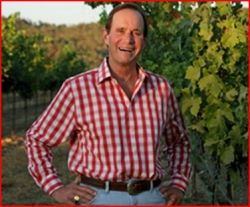
Obsessed with the finest in Napa-Sonoma Grapes
Even farmers are Hall of Famers
For a period of time, longer than I care to dwell upon, I have heard of To Kalon Vineyards and their successes. There are stories about To Kalon Vineyard quality and it's famous Cabernet Sauvignon grapes. A few years ago I was driving along and there, all of a sudden, I came face to face with the famous sign that identified the To Kalon Vineyard. Well, it was famous to me because I have always heard about how great wines start with great grapes. Every winemaker I know and talk to regularly have told me that you must have great grapes and those only come from very well managed vineyards in perfect location for the varietal that is planted.
Andy Beckstoffer displays the character of which legends are made of. From what I have heard in Napa, he is good at what he does and has been doing it since around 1970. He lives in Napa with his wife Betty, to whom he has been married for 50 plus years. Andy is well educated with a Masters degree from Dartmouth. By background or education he should not be a farmer. However, today he is the best at producing the finest of grapes for wines.
I am taken by the legends of achievers--people and products. In the area of products, wine specifically, the gold standard is rating points. Personally, I never look at points when looking for a bottle of wine, I prefer recommendations and raw luck. That seems to add excitement to my everyday life, which my wife tells me is boring.
Anyway, if you have a bottle of wine made from the To Kalon Vineyard grape, I suspect you will be impressed. This is probably the vineyard in Napa that is recognized as producing grapes that are used to produce the most 100 point wines in America. Hobbs Winery and Schrader Cellars have both received 100 points for their To Kalon Vineyard Cabernet's. These ratings were from Wine Advocate and Robert Parker. So to keep things in perspective I thought I would find out what a price for a bottle of say a 2007 Old Sparky blend would cost? I called Schrader Cellars and ask that very question. The lady was very polite but firm, "I can't give you a price for any of our wines because you must be on our mailing list to be able to buy the wine. Furthermore the waiting list is extremely long." She suggested I look at recent wine auction pricing for Old Sparky 2007 vintage. So I proceeded to take her advice whereupon I discovered, a 1.5 liter bottle of 2007 Old Sparky went for $2,833 at auction. That is what wine perfection cost today.
The point being: 100 point wines are possible from great vineyards and in the hands of people who know how to work with the raw material. Because of that, Andy Beckstoffer will not sell his To Kalon grapes to just anyone, even if just anyone could afford them.
This is also the same guy that in 1989 pushed for the Winery Definition Ordinance which requires 75% of the grapes in a Napa Valley AVA labeled wine must come from Napa; go figure. He is also the guy who is a promoter of green farming practices on the 3,600 acres of vineyards he manages and owns. Probably most interesting is how fair minded he is relative to his employees--at all levels. In an industry populated with immigrant workers, the Beckstoffer Vineyards is leading the way in labor practices: annually adjusted pay scales, full medical coverage, college scholarships and a 401 K plan for workers. This just isn't at To Kalon but at all 6 of his vineyards.
Yes, quality is possible even in the farming industry. At least for some the 100 point rating is the proof.
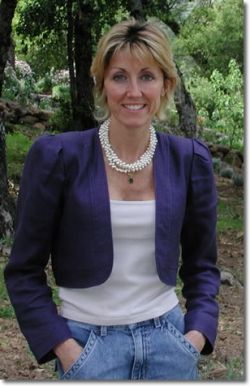
A First in Napa Wine Country
First woman winery owner from scratch
I have always been fascinated with Wine Country because of many reasons, but mostly it is because of the people. A person I know from a distance and respect is Delia Viader of Viader Wines. Most of what I know about Viader Wines is that it is a winery that is about 25 years old and produces very nice wines and by that definition they are also expensive.
Recently I was doing a story about "Napa First's" and came across the Viader name again after about 3 years. Someone said that women in the wine industry had to survive many slings and arrows, mostly likely because they women. The name Delia Viader came up as being the first woman in Napa to get into the wine business from scratch. "Scratch" was defined as buying raw land, clearing the land, planting the vines and starting the winery--all from a starting point where no winery ever existed previously. The real significance is that Ms. Viader accomplished this "all by her lonesome". She was a single mother, she had recently received a PhD from UC Berkeley, loved wine and through rugged determination she built a winery from nothing; no prior operation, no vineyards, no buildings, no legacy, and no spouse.
So, I would say the first woman to build and own a winery in Napa, from absolute scratch, is Dr. Delia Viader. Equally impressive is the fact that she works there with her children, making fine wines.
Disclaimer: I have never met Ms. Viader but love her story. I only mention her because I am doing a series of articles and working on a TV show about first's in Wine Country. As I mentioned, I am impressed with people who take risk and build something from nothing. I have tasted one of her wines and must say I did like it.
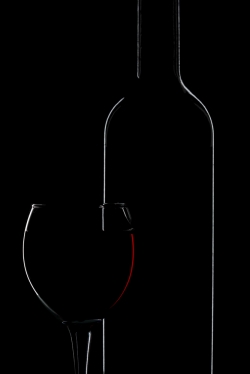
Bottle Deposits and Wine
Wine drinkers catch a break
Most people, especially men, who grew up in the 50’s remember looking for soft drink bottles on roadsides and at neighbors. Do you remember those days? Because they would be redeemed at the local grocery store for $0.02 each and larger bottles were worth $0.05 each. It would not be unusual for a very young person to get $2.00 per week on bottle redemptions during the summer. Of course in the 50’s there were no plastic bottles or aluminum cans. Metal cans were for beer and over time they would rust anyway. Ultimately, these bottles would be washed and a new label printed on and refilled.
Today we have moved beyond just glass relative to the value of a soda bottle. Obviously we now have “bottle bills” as they are called, on plastic water bottles, aluminum cans and beer bottles. Bottle deposits generally run from $0.05 to $0.10 each, depending on the state. Interestingly, wine and spirits containers are not subject to the bottle deposit or as I like to call it—the bottle tax. Some say, “Well, if it is a tax, you can still get a refund”. OK Mr. and Ms. average consumer, when was your last trip to a recycle center where you counted each glass bottle, can, or plastic bottle to get your refund?
Let’s call it a tax. This deposit is collected, by the 11 states that have a container deposit, directly from the distributor and the benefactor for any refunds generally is the recycling company that gets the bottles from curbside collections. And, it is estimated that 60% of Americans utilize curbside recycling.
Just to show you how profitable recycling can be; in Michigan commercial recyclers were driving reclaimed/recycled containers across state lines to redeem them for a higher deposit premium. In California that practice was costing the state $11million yearly in this type of fraud. That must have been a big deal to them because some of these industrious individuals were prosecuted.
Today there are 11 states with a ‘bottle deposit’ in place. The primary function of the deposit, paid by the consumer, is to reduce litter. It has evolved into another source of income for some governmental agencies. But, in the end, it provides more benefits than financial harm. It’s just that the people who pay the deposit can’t or don’t conveniently get the deposit back.
But material with a deposit value is kind-of-like the gift that keeps on giving. In a landfill an aluminum can will last for 500 years, glass will last more than 1 million years and some plastics will last more than 100 years. Interestingly, glass is the most versatile relative to its lifecycle; it can be endlessly used over and over.
The first ‘container deposit’ was implemented in Oregon in 1971. The eleventh state to start the ‘bottle deposit’ (same as the container deposit law) was Hawaii in 2002. 1982 was the year water in a PET bottle was subjected to a $0.05 deposit cost. The eleven states in addition to the previously mentioned with the deposit are: California, Connecticut, Delaware, Iowa, Maine, Massachusetts, Michigan, New York, and Vermont.
Interestingly, 80% of the beverage containers sold in the US is recyclable. In California, they recycle about 85 percent of the 20 billion+ containers sold in the state each year. Most of the containers come back through recycling centers, so based on that it stands to reason, many people do seek to get their refunds. Only 12 percent of the CRV material comes back through curbside recycling (mostly glass bottles, since they’re a bit more cumbersome for the average person to take to the recycling center). Also, in California, the money from unredeemed containers does not revert to the general fund. It is used for a variety of things (subsidies, grants, incentives) that support recycling and the recycling infrastructure. The general fund has borrowed from the recycling fund in the past, but is in the process of repaying those loans. Point being, we are talking about a significant amount of money.
Interestingly, wine and spirits bottles are not affected by any bottle deposit fees (at least so far). There are three reasons: First, wine containers, as a percent of the overall beverage market, is very small; second, the industry is highly committed to the environment and putting in place programs that are recognized as environmentally friendly; and last, when people recycle their other containers used in beer, water and soda beverages, wine bottles are going to be recycled along with the others. Over the years I have found wine drinkers to be highly conscience of the environment. Nonetheless, it is noticeable, the absence of a bottle deposit for wine. Of course, a $0.05 deposit on a small fraction of the beverage industry is problematic.
If 9 million bottles of wine are consumed in the US per day and 2 million are consumed in the 11 states with the bottle deposit then that would equate to about $100,000 per day for the 11 states’ treasuries; or, about $9,000 per day per state. The administrative cost to collect this tax would make it counter-productive.
Any time, I would rather have sustainable, eco friendly and biodynamic farming voluntarily taking place in the production of wine versus more regulation.
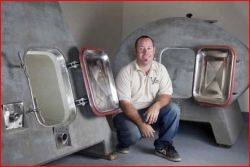
Concrete and Wine Are Simpatico
Concrete and wine are made for each other!
About a year ago I wrote a story about Delia Viader of Viader Wines in Napa. I was drawn to her story because of her passion for wine, the fact that she started from scratch and she was very innovative. It did not hurt that she is a very successful winemaker. One of her innovations was the use of concrete fermentation tanks that she brought to Napa from Europe. To this day she is a big fan of concrete tanks. But, now high quality tanks are made in the U.S.
Recently I had a meeting with some winemakers and overheard a conversation about concrete fermentation tanks and recalled the prior conversation with Delia and her experiences with concrete. Now my interest is piqued anew about concrete in winemaking. Concrete can be interesting, so let me tell you about Micah Utter who was the first in the country to make concrete tanks for wine. Nice, energetic guy who loves wine and concrete.
In the U.S., Micah Utter is the leader in designing and building concrete fermentation tanks for the wine industry. At 34 years old, born and raised in Central Coast Wine Country, he could be called the grandfather of concrete vessels for winemaking in the U.S. "Concrete has been around since Roman times and it has been used in the wine industry in Europe for several hundred years; but you are only seeing renewed interest in concrete in the U.S. wine industry within the last 10 years," says Micah Utter - President of Vino Vessel, Inc. The serious popularity of concrete with Napa, Sonoma and Central Coast wineries has just hit its stride within the past 5 years. This in part is due to the VP-Marketing who happens to be Lacey Utter, Micah's wife. "We have been making concrete wine tanks for about 6 years, the first in the U.S., and in 2011 we will see a 100% increase in sales," said Utter. That equates to about 50 tanks being sold in 2011.
Micah started in the concrete business 14 years ago, right in the middle of California's Central Coast wine region. He became interested in creating unique designs using concrete at his first job. Within 2 years he started his own business. That is when a surfing buddy, who had just started a winery, came to Micah with the idea of building wine fermentation tanks from concrete. After a lot of research with wineries in Europe and assessing how winemakers were utilizing concrete tanks in California, it seemed that there was a market for his new concrete tanks. "But, it proved to be a difficult start because we had to educate ourselves and our potential clients, i.e. wineries, on the benefits of concrete relative to their wines," said Utter.
By the way, concrete is not called cement by the informed. I was told politely that cement is used to make concrete which is much stronger than cement by itself.
There are about 17 wineries in Napa and Sonoma that are currently using concrete fermentation tanks. Concrete tanks have been around Napa for more than 50 years. But until about 5 years ago modern tanks came from France. Some big name winemakers and winery owners have stepped forward in the last 8 years to really promote the benefits of concrete tanks. People like Tim Mondavi, Delia Viader, Charles Thomas, and a few more. Now Vino Vessel, Inc. is the premier provider. An environmentally friendly product made in the USA. Today they have sold tanks in Georgia, Washington,Oregon and New York and internationally they have customers in New Zealand. There are approximately 40 wineries in the US using concrete tanks. Recently, Saxum Wines received a 98 point award for one of their wines fermented using concrete tanks. Others using concrete tanks include William Seylem, Kosta Browne, Flora Spring, Mark Herold Wines, JC Cellars, Edmund St. John.
Micah has recently delivered 2 concrete fermentation tanks to a winery in Napa; each weigh 13,500 pounds and hold 1,500 gallons each. Cost of tanks are hard to define, however, as a rule of thumb, you can expect to pay $1,500 to $10,000 for a new tank with hardware. However, there is nothing standard about concrete fermentation tanks, each one is made to order. Vino Vessel features 7 styles or rather shapes and they can be built in almost any capacity/size. In 2012 they expect to deliver 70 tanks for wine making; some outside of the U.S. Most interestingly is the fact that 2011 saw a 100% increase in units sold over 2010. That means 2011was a 50 tank year.
"If concrete tanks weren't worthwhile you can bet I would not be around," said Utter. "But the results are documented and even include some blind tastings of wines fermented in concrete, stainless steel, wood vats and oak." If a winemaker wants the nose and texture of oak then oak is obvious. On the other hand concrete, when done properly, is made of clean, natural materials that are controlled throughout the process. One thing oak and concrete have in common is that both allow oxygenation of the wine; both materials are porous.
Cement doesn't add or take away or mask the soil. It lets everything show. I would like to get James Laube's comments some day on concrete. Now that would be interesting.
The process of making a tank entails 8 steps. The first step being to determine the desired capacity and shape, then commit that to a computer model that will calculate dimensions, weight and pressures. Next, step is to select accessories such as leg support styles, front or top 'manways', coils for heating and cooling, valve placements and do you want an open top or closed. Third step is to hand-build the mold per computer design specs. At this point (step four), specially formulated concrete is mixed and laid-up by hand onto the mold. After this process is completed it takes approximately 3 days for the concrete to cure. In the fifth step the mold is disassembled from the inside. Finishing and slurry coating the inside and outside of the vessel is next, followed by step seven which is adding the hardware accessories. The last step, number eight, is the quality testing and preparing the tank for shipment anywhere in the world. From start to finish these processes results in a tank, ready for shipping, in 4 to 6 weeks. And the advantages are affordable wine storage units, easy to clean tanks and a long lasting product.
One added feature I should mention: to ensure the terroir is imparted to the wine, Micah ask that aggregate from the vineyards be provided to him. This aggregate/stone will be crushed and used in making the concrete for the clients' custom made tanks. Who knows how much it adds to the character of the wine, but at the least the tank is part of the terroir and the terroir is part of the tank…sort of a communing effect I would imagine. The mix of the concrete is a special proprietary mix designed by some true professionals and is free of any chemical additives.
Who would have thought that concrete was important to winemaking and a premier concrete designer, who is also a proud home winemaker, would be a Central Coast native?
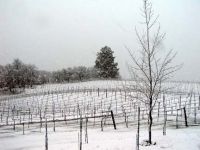
New AVA in Sonoma Country-Pine Mountain-Cloverdale Peak AVA
Terroir does matter when you are looking for a fine wine with personality
The latest designated AVA (American Viticulture Area) is named Pine Mountain-Cloverdale Peak. This new AVA designated in Sonoma County, CA became effective November 28, 2100 per the Tax and Trade Bureau in Washington DC. It was just last year when Calistoga received their AVA designation in Napa County. Pine Mountain-Cloverdale Peak is the 14th AVA designation in Sonoma. Napa has 15 AVA's and now Sonoma has 14 although Sonoma is twice the area of Napa and has half the wineries. These two area's represent the finest wine producers in the U.S. If you doubt that think back to 1976 and the Paris Tasting.
The Pine Mountain-Cloverdale Peak AVA encompasses 4,750 acres with 230 acres in vines. The Feds control how the name of the AVA can be used on wine labels. So, to invoke the AVA name on a wine label, 85% of the wine in the bottle must come from within that AVA. For this reason, wineries like to be very specific, when they can, in labeling a wine that comes from grapes grow in a specific AVA. This is especially true if a vineyard in an AVA has superior grapes that are or can be branded. Think about wines that are branded using their AVA's such as: Atlas Peak, Dry Creek, Alexander River or Howell Mountain. Consumers are very savvy in their varietal favorites and even pickier about the terroir/AVA of their favorite varietal.
Talked to Benziger/Imagery Wines about the impact of the new AVA on them and they said they are planning to introduce some varietals from their vineyards in the Pine Mountain-Cloverdale Peak AVA. They will probably have a "Pine Mountain-Cloverdale Peak AVA Malbec from next year's harvest. So, say by 2013 or 2014 you can get a Pine Mountain Malbec from Imagery Winery.
The defining characteristics about any AVA are the elevation, climate and soil. The filing to the TTB highlighted the unique topography of the boundaries of the AVA, climate, and soil. But it is the climate that makes this AVA unique. Nights are cool, set above the fog line of 1,600 feet elevation, and there is always a sea breeze. Yes, it does snow in the AVA in the winter. Because of the temperatures most fruit is picked later in the season. Due to thin soil conditions and weather the grapes have more flavor intensity, smaller size clusters which accounts for an average yield of 3.5 to 4.0 tons per acre. By comparison, on the valley floor you would see at least 6 tons and more per acre.
After five years in the making Pine Mountain-Cloverdale Peak AVA vineyards and wineries should start turning out Pine Mountain AVA wines very soon. Look for and try varietals from different AVA's and see what you think of them.

A Person From Wine Country
Vivienne Sosnowski
Quote: "Wine Is Good For A Story"
PEOPLE
Her Interest in Wine Country Runs Red-But She Likes White Too!
Ms. Vivienne Sosnowski-Author
Healdsburg, CA
About a year ago I was talking with the folks at the Sonoma Valley Vintners and Growers Alliance concerning some content I was working on for this website--concerning AVA's. It was mentioned that I should read a book authored by a local Healdsburg lady that gave some great historic perspective to Sonoma and Napa as a wine growing region. Wow, what a read, When The Rivers Ran Red, by Vivienne Sosnowski. I won't give you a book review here, but sufficed to say it is loaded with facts and colorful descriptions of wine country characters and ultimately how they survived the 14 years of Prohibition. These were some real survivors of the original 'man-made disaster'!
I started tracking down Vivienne; I just wanted to talk to a real authority on a historical moment in Wine Country. It took me about 3 hours to find her in Healdsburg and then sent her an e-mail and told her I wanted to talk about her book. Figuring she would assume I was a 'nut case', I couched my e-mail was somewhat plaintive and implored her to respond. I was hoping at worst to communicate by e-mail about the interesting history of Wine Country my favorite subject.
Not prepared to talk to a warm, humble, smart and very enthusiastic person about Wine Country; we talked for 90 minutes about the little known facts of hardships, the drama endured to keep families together, pay mortgages and take care of neighbors that needed help. Most of these families were immigrant families that knew the vineyard and wine business intimately. They never took handouts and truly made something for us to enjoy today.
Some of these names from the 1800's through Prohibition are staples of the industry today in Napa and Sonoma like Passalacqua, Niebaum/Inglenook, Foppiano, Nicolini, Sebastiani, and many more. "This is one of the wonderful things about Napa and Sonoma - the tradition of wine making that is handed down through families for generations," says Vivienne. "These two premium wine-growing counties of northern California are full of rich, inspiring history."
Vivienne wrote the book after she had been working with a friend, Gina Riner, on a photo and essay exhibition of some important wine country pioneers in and around Sonoma County's town of Healdsburg. The exhibition now hangs permanently in Healdsburg City Hall. Vivienne's component of the project was taking photographs of ten people, nine of them in their 90s - one of them was 106 - who had lived and worked in wine country. "As they sat for their photographs, they would talk about their lives, their childhoods, and their hardworking parents. And some of them told the most intriguing stories of what had happened to their families and to their wine and vineyards during Prohibition. I was astonished," she recalled, "I had thought Prohibition so long ago that no-one would be left to tell these tales." Vivienne thought these stories should not be lost to time and thought they should be written down and one day she thought, "well, I'm a journalist, I should do it." That's how the book began. Countless personal interviews later - along with research in the National Archives, the Library of Congress, historical society and museum files, and many libraries, the book came together.
"I see it as a warm and loving homage to the courageous, amazing early winemakers and to their survival. They lost their wines - hundreds and hundreds of thousands of gallons were dumped by Prohibition agents. It was these families' great assets that they had to watch be poured all over the ground, through orchards and vegetable gardens, down creeks and into rivers. It was horrifying. All that work, all those years of caring in the hot sun for vineyards, all that work pressing and crushing, and all the time nurturing the wine in those wonderful huge redwood tanks people used back then. The environmental damage was terrible - orchards died, gardens were ruined as were whole stretches of trees alongside creeks where the dumped wine flowed."
"And not one cent of compensation to any of these families for all those losses from any form of government, not from the state, not from Washington," she says.
But, enough of history, this is a section about "People" who work in Wine Country to keep it interesting and fun for the rest of us. Vivienne is not a diamond in the rough; she is smooth and polished to the proverbial "T".
"When the Rivers Ran Red" was published in 2009, Vivienne had spent 3 years doing all original research on Prohibition, a subject that has largely been secret to today's Wine Country lovers. "I was an editor in newsrooms in Canada and the United States before I wrote about the destructive forces of Prohibition. The book is 200 pages (a very quick and entertaining read) but, as Vivienne says, "Writing a book was a natural transition from newspapers which we often call 'the first write of history'. Then to this book, a history that had happened many decades earlier. It was a joy to write."
Vivienne's other interests besides writing? She loves to travel by plane or car or bus or train anywhere anytime, "I love to keep moving," she says. She's an avid reader of history, loves cooking and hanging out in a kitchen.
Her closing paragraph in "When the Rivers Ran Red" is what movies are inspired by-maybe Symtrek Partners has a movie idea here.
"Winemakers are men and women of the sun, the wind and the rain. Like great seafaring adventurers out on the oceans, they can feel change in the air, heat on its way, rain threatening, a frost looming in the dark night, long before they happen. They are fortune-tellers, every day gambling their knowledge, their intuition, against the risk of elements and climate. Their sense of taste is erotically acute: they can pluck one tiny berry off a vine, chew it for a split second, spit it out, and tell you instantly if that berry is ready or how long it might need to hang on the vine absorbing the goodness of the sun before it is ready to be gathered.
When you walk with winemakers through their vineyards, they wave their hands across the land as if they are introducing you to someone who keeps them virile and energized and pulsating with pleasure."
Well Ms. Sosnowski, I can only say I wish I had said it exactly like you.
September 14th was the release date of "When the Rivers Ran Red" in paperback. If you missed the hardcover then this is your chance.
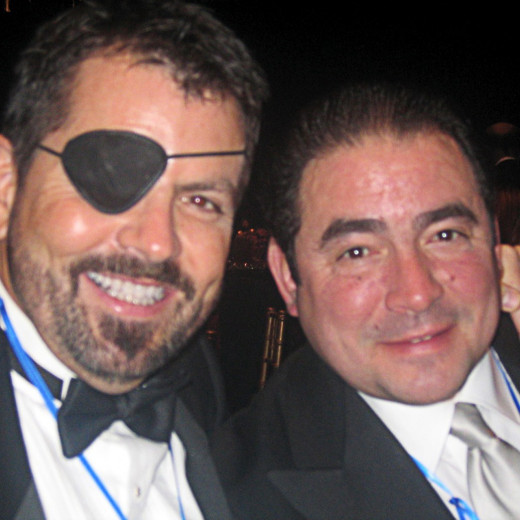
Kevin Vogt
Master Sommelier for Emeril Lagasse
This is a great guy that feels lucky to be in wine. He eat and speaks the values of wine.
He also produces his own small case wine production.
The wine is Mastery and it is truly a master at work.
Quote: "Good wine, good food, good conversation, makes good friends."
PEOPLE
Kevin Vogt, MS
Mastery Wines, St. Helena, CA
Kevin owns his own wine brand and is one of 105 people in the Court of Master Sommeliers in N. America.
If you are more casual about your approach to enjoying wine, a run of the mill sommelier will work just fine. But, restaurants with significant commitments to a fine dining experience must have a top expert on staff to manage wine selections and be equipped to counsel patrons as to wine/food pairings; these are Master Sommeliers. If you wonder why a certain cut of steak at say Delmonico's Steakhouse tastes great, it could be because a Master Sommelier like Kevin Vogt recommended the perfect wine.
I met up with Kevin Vogt at one of Emeril Lagasse's restaurants in Las Vegas. The truth be known, I wanted to try his 2005 Vintage "Mastery Wine" that goes for $200 a bottle in the restaurant…only available in a restaurant. Also, Symtrek Partners is about to undertake a new project that will present viewers with a new look at Napa and Sonoma. And, I wanted to see if Kevin would be interested in the project. Kevin was referred to me a year ago by a winery person in Napa who said I needed to meet one of the nicest people in the business. If you follow my "People" musings you know that I am most interested in introducing genuine people, who are personable, and have a passion for Napa/Sonoma. Kevin is the real McCoy. You must meet him!
Kevin got into the business after trying his hand at a Computer Science degree and found that he did not like the tedium of that vocation. "I left computer's and started tending bar while I explored my options," said Kevin. "It was in this process that I met a very knowledgeable wine salesman. This guy and I clicked immediately as he started me down the road to seriously learning about wine." Kevin went on to explain that over the course of a year this salesman gave him technical wine books to study and even devised tests he would give Kevin to validate his progress in understanding wine.
"Over the course of 7 years I got my degree in Hotel Administration, became a Master Sommelier and got married," Kevin explained. In fact, he became the 38th Master Sommelier in N. America and the 89th in the world to be so designated. In 1996 he joined Chef Emeril Laggase and then received his Master Sommelier designation in 1999 and as Chef Emeril's Director of Wine in Las Vegas, Chef Emeril's Delmonico Steakhouse received the prestigious Wine Spectator's Grand Award.
OK, I have proven Kevin's bona fide. He is the real thing: a real genuine guy that is unassuming, patient, does not come across with a superiority complex, and really loves the wine business and Napa and Sonoma. In fact, his Mastery Wine comes from St. Helena. If you attend any of the San Francisco wine/spirits competitions or have taken a Crystal Cruise Lines food and wine theme cruise you will have crossed paths with Kevin.
"Let's not let this discussion be solely about me," Kevin said to change the subject from himself. "There are a lot of people that I have come across and worked with in Napa that have been very good to me." I ask him to give me an example. "The first people I think of are Paul and Suzie Frank." "My wife and I always ask each other, when we get to a place where we need to make a business decision: What would Paul Frank do? That is how much I respect this man from Wine Country." Kevin explained that a deal on a handshake from Mr. Frank is far better than a written contract. Nice people seem to associate with nice people-we are surely judged by the company we keep.
In 2005 Kevin started producing a very high quality Cabernet blend. This is a wine produced in a partnership with Gemstone Vineyard. I always ask people: What makes a high quality wine or as I say-Expensive? Kevin explains that first he looks to a given AVA, then the vineyard and then blocks of grapes in the vineyard. When a winery starts getting very selective in the fruit they buy the process starts getting very expensive. Then, costs are further elevated by making the wine in small quantities which allows you to precisely manage the fermentation and aging process. Finally, Kevin says he spends a lot of time putting his Master Sommelier training to good use in the blending process. "In my wines I want the consumer to have the fullest possible experience of taste sensations," elaborates Kevin. "I want a full bodied wine, with the most flavors of fruits possible, an unbelievable surprise of bouquet and finally a finish that keeps the dining experience memorable and worthwhile." From my perspective, like I have said before, it is hard to nail down why a bottle of wine can be so expensive, but you know fine wine when you taste it.
No, I never got to try his 2005 Mastery Wine. Guess I was just too subtle in asking for a small taste. One visit does not make me that good of friend-yet!

There are more to vines than meets the eye
Mr. Ernie Ilsley-General Manager, California Grapevine Nursery, Inc.
PEOPLE
Napa, CA
I called Ernie 3 month ago to do a story on a nursery that produces premium vines for new vineyards. He pushed me off at the time because he was a speaker at a wine seminar in Canada and then had a quick trip to visit clients on the East Coast, then a quick trip to Europe and finally a new planting in Napa of freshly cloned root stock from his laboratory. Nothing is easy in agriculture, even if the agriculture is about vines, grapes and wines. Now I am in his office--a 100 acre nursery of hybrid grapevines. This is an industry where science embraces Mother Nature in the finest ways. Cloning, growing and then planting the root stock is raw science that goes to the core of everything; even human existence DNA. It's the graft above the ground the produces a new clone of a varietal vine.
We all know where grapes come from, but where do the vines come from? I've got the answer to this mystery; California Grapevine Nursery in Napa, CA. This is the oldest grapevine nursery in California and has been around for 60 years. The guy responsible for growing and selling the new vines is Mr. Ernie Ilsely. He was born in Napa, in addition to managing the nursery operations for CGN he is part of a family wine business-Ilsley Vineyards with 40 acres in the Stag's Leap District of Napa. Ernie turns out a cult Cabernet who consistently gets 94-95 points by Wine News and Wine Enthusiast. ("Not a sales pitch just fact," says Ernie.)
Ernie is a guy who loves Napa, as does his wife and 3 daughters. He is a graduate of UC Davis with two degrees, one of which is…you guessed it, viticulture. After running a vineyard operation for many years, 6 years ago he went to work for California Grapevine Nursery. Some of their vines have pedigree's involving very prestigious root stock. And yes, vineyard owners validate the stock from DNA testing.
"In our nursery and in our cold storage facility (that's where the dormant grapevines are stored awaiting sale) I manage about 15 clones of the Cabernet Sauvignon and 30 clones of the Chardonnay and an equal number of Pinot Noir clones," says Ernie. "When a vineyard decides to replant, for a number of reasons, these clones are what make a vineyard owner excitable." Two things are critical when it comes to a new planting: 1.The characteristics of the cloned varietal, and 2. the root system. "The cloned varietals are breed to influence such things as the ultimate yield or tannins or make for early ripening fo the fruit," Ernie went on to explain. "The root system/stock is important because that is what is dictated by soil conditions and climate where the vines are to be planted."
What is a 'clone'? Well, Junior High biology comes into play here. The root stock is selected that will receive a piece("sprig" to me) of another vine with the desired DNA. What grows is the new vine that will produce the cloned fruit. Grafting is exactly that; slice off a branch of the clone vine you want and cut a notch into the root stock and splice that cloning piece into the root stock and wrap it tightly and put it in the ground for 1 year to grow. "That is a very simplistic description," said Ernie when I repeated what I heard him say to me. Assuming that grafting happens, then in 1 year that root stock is harvested and put into cold dark storage to make it dormant and until planted in the vineyard. "Once in the vineyard it will take 3 years for that new cloned varietal to produce fruit," according to Ernie. "This is just one reason why wine is so precious."
"We sell a vine for $3-$4 each and there are about 1,000 vines per acre; sometime 2,000 or more," Ernie says. "Right now vineyard owners are cautious in new plantings because of the downturn in the economy, and that makes me sad because I see the pride vineyard owners and winery operators take in their respective grapes and wine."
Vines can live for 150-200 years, so who buys new vines? Here is the answer, according to Ernie, "There are of course new vineyards being planted in such places as Texas, Michigan, NC, Virginia and California they require new root stock. Then there are new plantings due to old vines producing poor yields. Then there are the ever present ravages of disease pressures from disease. Finally, marketing considerations brought on by the ever changing tastes of the consumer that demands new varietal wines."
California Grapevine Nursery, Inc. is licensed by the European clone developers association called ENTAV. This is the European body that test root stock and genetics, develops new clones and breeds new clones for ever changing vineyard conditions. UC Davis is also the premier institution in Wine Country that helps keep new vine heritage on the forefront of evolution.
Ernie is a salt-of-the-earth guy who is smart, hard working and is dedicated to wine and Wine Country. Without his elk, none of us would illuminate and wax poetically about the cost of a bottle of wine, or its bouquet, or the heritage of our favorite varietal. "It is all in the breeding," says Ernie.
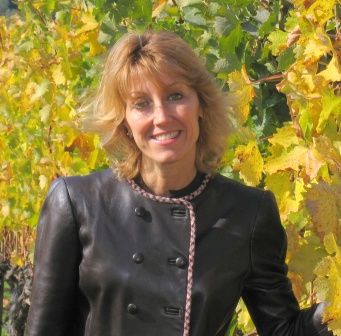
Delia Viader-Viader Winery
PEOPLE
Napa Valley
Dr. Viader: a mother, farmer and winemaker with a philosophical touch
Today there are many more women in the wine industry but one in particular seems to me to warrant special mention- Delia Viader. She is smart, fearless and has definite opinions on most things wine.
The 70’s was perhaps the start of what could be defined as a new generation of winemakers. Early on we had Robert Mondavi with his many innovative ideas, then came the 1976 Paris Tasting that helped put Napa Valley on the world map, and then the 80’s brought a growth of high quality vineyards and wineries such as Delia’s. As a single mom, she built and continues to operate a very successful winery and vineyard on Howell Mountain.
I do not want to plow old ‘terroir’ about Delia’s background so indulge me as I look at a ‘Person’ of Wine Country; one that works every day to make it interesting and appreciated.
Everyone knows Delia was born in Argentina, received her undergraduate degree in France, came to the US as a grad student and earned a PhD. Good so far, but it gets more interesting. In the early 80’s Delia decided her calling was “making wine”. But first she needed premium grapes. Her grape solution was in the land with rocky soil, perfect climate and great drainage her father had just bought on Howell Mountain. Planting vines on a mountain with the vines oriented vertically when most other vineyards were planted following the contour of the slopes was innovative in California although common in every important wine region in Europe. “I wanted to get the vine row orientation to follow the sun maximizing sun exposure but without having the sun damage the fruit. Planting the rows east west fashion allowed the plants own canopy to protect the fruit zone by shading it at the hottest hours of the day. Closer spacing would allow more plants per acre but each plant would only need to produce very little. The poor fertility of the soil added to the roots competition would keep the vine well balanced; the volcanic soil would stress the vines but would also provide good drainage. Controlling the vegetative cycle of the vine in this manner would allow me to control the quality from vine to bottle,” said Delia. To start the project, I asked my father for financial support. Thinking of all he had had to spend on my previous education he pronounced me an "over educated farmer". I think that that fits the bill alright. And I am quite happy with the results.”
“I like this industry and very much enjoy meeting all the new winemakers in the valley; they each bring a certain artistry to wine. Like artists, I think we all take pride in what finally comes out on the canvass for people to enjoy,” explains Delia. Delia has achieved a great deal in almost 30 years making wine. She thinks the intrigue of wine is ensconced partly in history, partly romance. There is a lot of complexity and moving parts to wine growing which you can’t control 100%; after all, this is farming isn’t it?
It is like asking a fighter pilot why he fly's, or a highly successful professional golfer why he plays the game. I now have the answer: Everyone has a gift, a passion, a love, a desire that is fulfilled if one is lucky enough to find that calling and brave enough to follow it…to the end. So why did Delia buck the trends and take up winemaking? She says, “I entered the wine industry in a very circuitous way...in many ways…it just ‘happened’ but I love every minute of it. I worked in every aspect, in the vineyard, in the cellar, in the bottling line…did the accounting and marketed and delivered the goods” truly a “one woman show” although since 2005 my son Alan has earned the title of ‘wine maker'. As a mother, nothing could have made me happier than to have one of my children believe this worthy enough to be continued. Today two of my four have decided to continue the legacy. The way I’d like to put it is: I have two now plus two ‘in reserve’. What I love about wine making is the endless possibilities of creation, nurturing, life altering experiences it can offer.” Many of those life altering experiences have to do with the many life long friendships formed. She then drops a few names. Among the closest friends she’s just visited are Michel Rolland, Jean Claude Berrouet, Pierre Lurton, Angelo Gaja, etc. These are the folks that inspire her and she counsels with to keep her wines on the leading edge. “You cannot survive in this business without a sanity check all the time,” says Delia. Her long list of customers also support and reinforce her lifelong dedication.
Now the question: Is the mystic aura of wine country waning?
“I travel and have travelled a lot with my family since I was a few months old, I have seen many beautiful places, even some that could be called more beautiful than the Napa valley but there is only one place in the whole wide world I call "home" and that is up on my rocky hill in St Helena, overlooking my vines and this beautiful valley.”
Delia admits her wines are on the high-end side of the scale. But, she is adamant about their quality and value. Her belief is that top quality comes at a premium in the wine business.
Her European background provided her with a global view of things. For the last 25 years, through extensive travel and working every placement of her wines herself, she has maintained a presence in 44 States in the US, Europe, Asia, the Arab Emirates and parts of Central and South America. Speaking 6 languages fluently adds to the international relationships. This past February she traveled to Rome, Italy to speak at an International Symposium on the grape varietal Cabernet Franc, her favorite grape.
“It was surprising to me 25 years ago, how very few American made wines were shown or expected to sell outside the US,” said Delia. “Luckily that has changed.”
Delia likes to ‘discover’ new grape varieties, try new concept blends, new winemaking techniques. “I think I like to experiment so much because basically I love to learn, I love to push the envelope a little bit. Wine is an ideal pursuit for me” commented Delia.
Now it gets interesting because we cover the impact of a great wine marketer and innovator…Robert Mondavi. “Robert Mondavi was the real pioneer. I still remember Bob's advice "believe in what you do and keep doing it, don't talk about it, if it is good, just do it"”.
“In that mindset, we experiment a lot and like to share with others; in that way I am not a pioneer, Robert Mondavi was. You could just "drop in" (at RMW) anytime and you would be invited to participate in whatever wine experiment was underway in the lab...that's why in good jest, we used to call the winery “the University of Robert Mondavi” -the spirit of camaraderie and the generosity of the exchange- that in itself, was such a wonderful experience for all of us just ‘beginners’. We will probably never have that again.”
The last subject we covered was innovations. Delia feels she has done her share of trail blazing.
She gave me 3 examples.
First, planting the vineyard with rows directed up and down the hill --east /west-- a rarity in CA but an ancient practice all over Europe. Today there are a number of great vineyards planted exactly the same way. Copying is a form of compliment after all.
Second, wine storage under ground tunneling was relatively a new idea in the 90’s. Delia now has a 16,000 square ft facility underground. With humor, she adds: “My very first tunnel went through the mountain –end to end-. At the farthest end door, I insisted on putting a little diamond shaped window to let the sunlight shine through and so we could claim to see “the light at the end of the tunnel”.
Third, in 2001 she hired consultant Philippe Armenier, to help transition the vineyard viticultural practices from organic to biodynamic.
Also in 2001 Delia began experimenting with cement fermentors. Her first egg shaped cement fermentor was brought over from Burgundy. Three more “open top” cement fermenting tanks were added for small lots. These vats are finished with a special process, that renders the interior almost porcelain like. The cement walls are very thick and cement is completely neutral. This allows for a very slow and gentle extraction through long extended maceration periods without imparting anything; the result of fermenting grapes in this manner is a direct reflection of the quality of fruit that comes from our vineyard.
We also ferment in small oak barrels; and after proceed with malo lactic fermentation. VIADER, our proprietary blend of Cabernet Sauvignon and cabernet Franc and our Petit Verdot with Cabernet blend named simply “V”, are aged exclusively in 100% new French oak barrels. But remember, her approach is not to mess with the process more than is necessary. After all, the most unique thing Viader Winery has is its fruit which showcases our terroir, and that is what makes the most sense. Again, we are talking art at this point.
Where do Delia and Viader Winery go from here? “There is still so much to learn and so much we could do to minimize our footprint, to replenish and preserve. The long-term perspective required for successful winegrowing and winemaking also entails certain flexibility. We are responsible for how well we care for our world’s resources today and for what our children will inherit tomorrow. Education, research and developing that new information are critical. We have not even touched the tip of the iceberg regarding technological advances in the vineyard, the wine making and the inter correlations with medicine and human well-being. Wine encompasses such a holistic approach; it provides a plethora of subjects to investigate and talk about for a lifetime.”
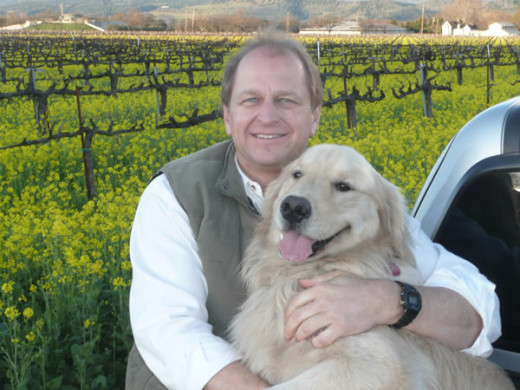
Mark Heinemann
Always from Wine Country-Sells Barrels
Quote to accompany article: "Compromises are for relationships, not wine." - Sir Robert Scott Caywood
Mark Heinemann-Demptos Napa Cooperage USA-Born and raised and lives in Northern California.
I was asked to do some top level research the other day for a potential client on the actual cost of a bottle of wine. This topic is not straight forward and is fodder for a future story. As a by-product of that research I got too close to the edge and fell into the wine barrel trap--the devil is in the detail as they say. When it comes to wine barrels, I met a walking encyclopedia in Napa. He was born in Northern California, and then in 1969 he helped his dad plant a new 16 acre hillside Pinot Noir vineyard at age 7 and worked that vineyard until he left home at 18 to do an apprenticeship in the wine industry in Germany. A year later he came home to attend UC-Davis on a Farm Bureau scholarship and obtained a degree in International Wine Marketing.
Mark Heinemann with Demptos Cooperage USA in Napa attended grade school and high school in St. Helena, CA and now calls Napa home. As the old saying goes, acorns don't fall far from the tree. At 47 he has already spent 4 decades in the California wine industry and settled on the career and science of wine barrel making-cooperage is the preferred term. Mark is a guy who knows the players in wine country personally, knows their wines very well, answers his own phone and to a fault, has forgotten more about barrels than most winemakers will ever know.
Mark is the Director of Sales for Demptos Cooperage USA, one of the oldest cooperage operations in the world (started in 1825); a publicly owned French company that is 80% owned by the original family. In 1982 Demptos of France opened shop in Napa to manufacture and sell barrels made expressly for wine in the US, Canada, Mexico, Chile, Argentina, Australia, and New Zealand. These are not disassembled barrel parts sent to these markets and assembled, these are finished barrels; all made in Napa. But remember, there are approximately 60 cooperage firms in France, 3 in Hungary and 16 in the US. Until recently the preferred material for wine barrels was French White Oak. The use of American White Oak started about 50 years ago.
"I am obsessed with getting the right barrel to the right winemaker for a specific varietal and style," said Mark. "By right barrel I am talking about whether it is American, French and/or Hungarian Oak and how the new wood is toasted." (I called it firing, but who am I?) My one opening question and Mark is now on a roll and proceeds to elaborate, with little further prompting from me, about wine barrel facts. "At $885 for a 60 gallon French Oak barrel or $655 for Hungarian Oak or $395 for American White Oak, this is a sizable investment on the part of a winery. When you cater to very high end producers that sell recognized premium wines, they trust the integrity of this significant product you produce that is vital to their wines' character," Mark continued. "I am constantly tasting and evaluating the wines in our barrels to see how the barrels are working in relationship to the developing wines."
Coincidently, (and stranger than fiction) my great-grandparents, grandparents and parents came from the small Southern Missouri town of Salem, Missouri. According to Mark, some of the finest American Oak for wine is from around that area of Cuba and Salem, Missouri. And it is Mark's opinion that this is the finest wine barrel oak grown in America. "With their sustainable timber management practices, the LeRoy McGinness family will produce the finest oak for Demptos Cooperage USA well into the future," said Mark. As an aside, Mark tells me there are more White Oak trees in the US today than 30 years ago. "Selective cutting, good forest management and natural reforestation have stabilized finer grained oaks in preferred growth regions like those found in Missouri, Hungary and France."
It takes roughly 32 staves to make a wine barrel and they don't come pre-bent. Demptos Cooperage USA makes approximately 100 barrels per day from French and American Oak for non-European and Southern Hemisphere wineries. (I guess that is one reason there are so many wine barrels sawed in half and sold for flower planters when one considers 450,000 new wine barrels and 2.5 million bourbon barrels are made in the US. yearly.) I found out from watching the experts build a barrel at Demptos, it would really help to have another pair of hands-there are a lot of moving staves, hoops and hammers to make a barrel. Selecting the staves, putting the hoops in place, and then setting the partially finished barrel over an oak wood fire, is how the staves are naturally bent into shape. This is the simplified explanation but it doesn't explain the true complexity of the science behind a wine barrel.
Here is Mark's sales pitch about the art and science of selling wine barrels. "We are unique because we make and sell high-end barrels for the world of fine wines. Demptos Cooperage USA, after much experimentation, has sourced what we consider to be the finest oak woods from around Cuba, Missouri; our selected woods are air dried for up to 3 years in the natural heat, cold and humidity of Southern Missouri; I have the support of a dedicated research department in France who research oak in wine making; our stave bending is done with toasting over traditional oak fire; and the oak is hand selected specifically by grain (8 to 18 growth rings per inch).
Some of this research is self explanatory, but the issue of research is interesting. I found out, it is the unique nature of wine oxidation that comes only from using oak, that is very important to winemakers. Therefore, a lot of attention is given to wood structure and its chemistry: rates of oxidation, curing characteristics, and the molds that form on the oak because of the interaction with oaks natural sugars and how to set up the release of those sugars in the wine via the toasting process. The molds living and dying on the oak takes place in a 24 month period and contributes heavily to wines delicate dry sweet rounded taste. In fact, French oak is so renowned that it has its own terroir designations in 11 forests in France, by name and by grain selection.
Today, large 8 ton capacity oak fermenting tanks are sold at about 1 per day out of Brive, France. These can replace the stainless steel tank fermentors and can be temperature controlled just like stainless steel. Robert Mondavi made stainless steel famous and now they are coming full circle back to oak fermentation tanks.
Mark is careful to mention that the aromas and flavors in our favorite wines today are a product of: aging and seasoning of oak, oxidation of the wine, caramelized sugars toasted in the oak, the mold spores inherent in the sugar maturation in the wood, the minerals in the soil where the grapes come from, and, most importantly, the craftsmanship of the winemaker in bringing together all the elements of winemaking. "It all starts with Mother Nature; growing healthy vines, developing complex, flavorful fruit paired with the Mighty Oak," says Mark.
First AVA Designated Area in the US?
The first AVA in the US was assigned on June 20, 1980 in Augusta, Missouri. Strange as it may be it was NOT California. As of January 2010 there were approximately 199 AVA designations in the US. The last one in California was in 2010-Calistoga AVA.
1976 Paris Tasting
Organized by an Englishman wine merchant in Paris, this is the wine tasting that shook the world of wine.
Winners:
White-Chateau Montelena-Calistoga, CA-Chardonnay (1973 Vintage)-Grapes were from Sonoma County vineyards.
Red-Stag's Leap Wine Cellars-Napa Valley-(1973 Vintage)-Cabernet Sauvignon
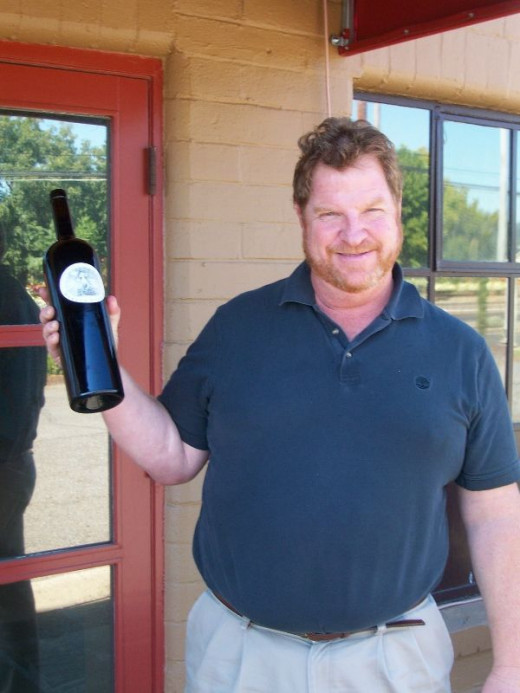
Jeff Yates-Wine Merchant, St. Helena
Flash-St. Helena Wine Merchants is closing its doors...Jeff is a great guy
Mr. Yates is a wine merchant in Wine Country and conducts private seminars and tastings for Symtrek Partner's corporate clients.
"I love wine, I love to talk about wine and I love to sell wine to people intent on enjoying unique wines. I taste thousands of wines each year and feel that I can pick wines that people will enjoy. I love to get people out of their 'box' and have them try wines that they may not be familiar with."
A question that has always intrigued me is; how can a retail wine merchant make a living selling wine in Wine Country, surrounded by so many wineries? The short answer is; very well thank you. Jeff sells about 6,000 bottles of wine annually to a customer mix of about 50% being customers outside of St. Helena. "We make a living by knowing wines, knowing our customers and having an inventory of only quality wines that often aren't sold outside of California," said Jeff. "Tasting 50-60 wines per day will net maybe 1 or 2 being placed in inventory."
"We spend about 75% of our day doing wine research, tasting, canvassing other industry professionals and communicating with a very refined customer base," says Jeff. "It is not by accident we compete very well with the likes of Costco and Trader Joe's. We work very hard at our vocation."
OK, what about that perfect "10" or in wine parlance, that perfect "100 points".
I have explained why I think Napa/Sonoma is a great place for every conceivable corporate meeting. But, indulge me for repeating myself-this place is unique because people here specialize in a product that is universally recognized; even non-oenophiles can appreciate people working throughout the year striving toward excellence. Their accomplishments are often in spite of acts of God and pestilence. As a result we all can relate to folks who lay it on the line year after year; not knowing what is coming next year. So let me address the topic of Wine Country Excellence.
A corporate executive called me awhile ago asking me, "How many Napa/Sonoma wines have been rated 100 points in the last 10 years?" I thought that would be easy to find out. This led me from Wine Advocate to Wine Spectator and Wine Enthusiast Magazine's to a premier wine shop owner in St. Helena-- Jeff Yates, one of Symtrek's go-to people. Defining the real 100 point wines is not an easy task for many reasons: personal opinions, 3 or 4 rating organizations, consciences, thousands of people participating in the rating (one of which is our friend James Laube), and time frames… just to name a few.
"There are no 100 point wines in the world," says Jeff. "100 points means that it is a perfect wine and there isn't anything, in my opinion, manipulated by man that can be called perfect." Jeff allows that his perfect wine is 98 points. But, if God gives the vineyards a perfect growing season and a gifted winemaker takes that perfect fruit and turns it into a spectacular wine it would be 99 points. Now that is one man's opinion who has been selling wine since 1983 in Napa. Further, let me clarify that there have been no 100 point white wines from Napa or Sonoma.
Hang on; I am slowly making my way toward giving you a list of 100 point wines from Wine Country over the past decade.
But next what are some facts about 100 point wines. One man's 100 points is another man's (or woman's) 95 points. So I have tried to settle on Robert Parker's rating system and that is also Jeff's benchmark. In the past decade there has not been a 100 point white wine awarded. That is probably a function of "varietal preferences". Napa County has produced the most 100 point rated wines. Lastly, wine tasting relative to a points rating system is very complex, subject to the vagaries of personal preferences and probably some politics (my opinion). "Bottom-line, everyone needs to understand and accept their own tastes' at a given point in time and get good advice from wine merchants and sommeliers. They can interpret and recommend the wines best for your taste and budget; helped with some familiarity with the customer," says Jeff.
Speaking of budgets. Some of the 100 point wines from Napa over the past decade can be had for as little as $215, to a Paul Hobbs Cab for $400 and from there, a Bill Harlan bottle could fetch $900. But, there are a lot of 90 point wines in my price range for everyday consumption. I would be embarrassed to tell you my price range so let's move on.
Here are the 100 pointer's from Napa/Sonoma: (not in any particular order)
Shafer 2002 Hillside Select
Sloan 2002 Red Wine (Cab Blend)
Screaming Eagle 1997 Cab
Bryant Family 1997 Cab
Abreu 2002 Thorevilos
Colgin 2002 Tychson Hill
Harlan Estate 2003 Proprietary Red
Paul Hobbs 2002 Beckstoffer to Kalon
Harlan Estate 2001 Proprietary Red
Harlan Estate 2002 Proprietary Red
Sine Qua Non 2002
Schrader Cellars 2006 CCS
Schrader Cellars 2006 Old Sparky
What makes excellence? To hear it from people in Wine Country it is: the vine, vineyard (dirt), God, the oak, winemaker experience and the right blending. This is just to name a few.
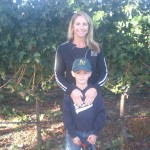
Kristi Seitz-Founder, Owner-Brookdale Vineyards
As on outsider, sometimes life doesn’t seem fair!
Kristi Seitz is another of those “born and raised in Napa” wine folks. In other words she is not a newbie to the area or to wine. But her story, at least from my perspective, is about a single mother who is raising a 7 year old son, works in the fields and makes 90+ point Cabernet Sauvignon, all simultaneously! Her husband Mike died tragically more than 6 years ago, but not before planting their own vineyard. Today it is that vineyard, on the Silverado Trail, that Kristi personally works all spring and summer and then picks the fruit in the fall. “Mike’s dream was for us to make great wine together for a long time, then retire and have Charlie (their son) keep the heritage of Brookdale Vineyards alive,” said Kristi.
Brookdale Vineyards started producing wine in 2000 and in 2002 had a vision called “13 Appellations”. This is a project Kristi is a partner in with 3 other friends. “The idea of 13 Appellations was to make a high quality wine blend using the finest fruit from all 13 designated appellations in Napa Valley,” explains Kristi. But, now there are 15 appellations and Kristi says they will keep up with the winning philosophy. More on 13 Appellations wine in a moment.
Remember, this is not so much a story about an attractive young woman in the wine business; rather it is about a lady who has overcome great trials to make a success of her and her husband’s dreams…making a wine to celebrate all that Napa has to offer.
Kristi, graduated from Sacramento State College and loves the wine industry and business of wine. Like a lot of people in the industry her approach is learning the trade of wine at the school of ‘hard knocks’; learned on the job. “In 2004, the year after my husband passed away I made wine at a small, family-owned winery. They provided all the equipment, but there was no staff! I knew this was going to be tough, but this was a great opportunity for me to learn the entire wine making/production process,” explains Kristi. “And I did learn a lot very quickly!” With the help of my dear and loving family, we processed 8 ton of cabernet that first year. I was there from the moment the grapes were delivered and took part in every aspect of making the wine until the final product was bottled. “I figured if I was going to continue pursuing this dream of ours then I needed to know everything about making the wine (which my husband had previously overseen in the past),” Kristi explains. This was Kristi’s year! Her winemaker, Craig MacLean was there almost daily to oversee the operation and teach her how to use some of the equipment unfamiliar to her. It was an experience she claims never to forget or take lightly.
Brookdale Wines are available only through restaurants, on-line and via the winery. She realizes that being a single parent keeps her close to Napa. It makes it hard because to really promote our wines a winery owner needs to get in front of the consumer and be very hands-on. So for now she keeps the name out there by direct mail, e-mails and local tastings. It also doesn’t hurt having 90+ wines.
Now, back to 13 Appellations. This is a very nice wine that comes from the collaboration of Kristi’s late husband and 3 friends. The strategy was to make a wine using premium fruit from all the appellations in the Napa Valley for this hybrid wine. When they started the process in 2002 there were 13 appellations, then 14 in 2004 and in December 2009 the 15th appellation was approved. So when the 2009 vintage is released they will call it 15 Appellations.
How good is the current 14 Appellations Meritage? Well, according to Bounty Hunter Wine Merchant, “One of the most decadent and compelling red blends we’ve encountered in recent memory... a runaway hit with anyone lucky enough to have tasted it.” Last year Kristi and her Appellation partners produced only 900 cases.
One thing common amongst everyone I have met in Wine Country is their unalterable love of farming grapes, the attention to detail, enjoyment of making the best wines and willingness to try something new.
It’s hard to believe there are so many women in the agricultural business called winemaking. Some really highly acclaimed and award winning female winemakers call Napa home. Every one of these ladies in the wine business has a unique story, philosophy about wines, and a willingness to accept the life of farming.
Background:
Kristi was raised in Napa Valley. She grew up working at her family’s business, the Soda Canyon Store. She met Mike while working at the store, married and together they began Brookdale Vineyards. Her family still resides in Napa. She loves the Valley and has no desire to move away. Many locals complain of the traffic and tourists, but it is the bread and butter of her businesses (Brookdale, 13 and 14 Appellations and the Soda Canyon Store) and she welcomes the tourists.
“Selling wine in 2010’s economy is more challenging than before. Wine is still selling, you just have to work a little harder at selling your product than before. It is important to stay well connected to your customers. When you are making a good wine and you believe in the quality of your product you will succeed even in these difficult times,” says Kristi
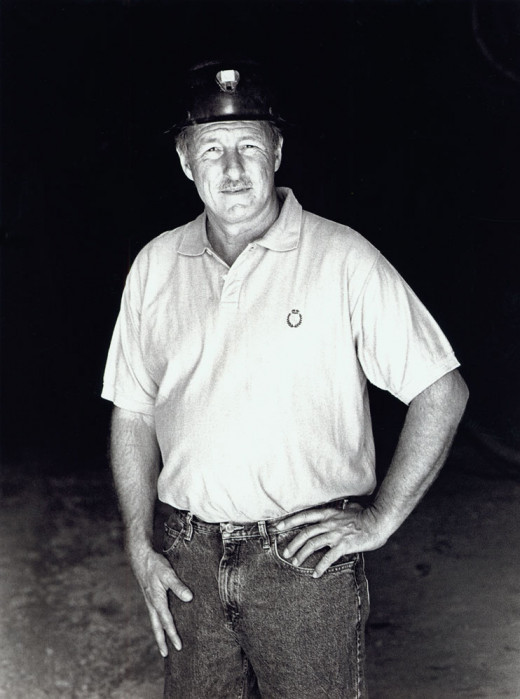
Mr. Don Magorian Digger of Wine Caves
Not all caves in Wine Country are from Mother Nature
We are continuing in our look at people that make Wine Country a place of intrigue, interest and just plain fun. I am venturing off the beaten path a bit to introduce you to a guy that has expanded the wine community, made it environmentally friendly and added an element of intrigue.
Meet Mr. Don Magorian President of Magorian Mine Services who has been boring, digging, tunneling (whatever you want to call it) wine caves in Wine Country for over 15 years. After talking to him he almost pulled me into having a love affair with building very sophisticated caves for our wines. I still don't understand fully how he knows where to make a precise turn in the tunneling process but he has been threading needles underground in Napa and Sonoma Counties for some of the most prestigious wineries.
By background and education Don is a graduate of University of Nevada-Reno with a degree as a Mining Engineer. He probably is also a mining innovator, if there is such a thing, because he has brought technology innovations into the wine cave business. Don and his wife started the business and have grown it to 25 employees and now have 30 wine caves under his belt. But he started mining 30 years ago.
As a general rule I gravitate to real down to earth people who are genuinely honest, hard working and take a great deal of pride in giving more than expected. Don commented, "I have built a lot of caves for people on nothing more than a handshake." "My reputation for honesty is mine and my family's livelihood and that I will not compromise," he continued. You know something, I believe him. "Call Farrari-Carano or David Raffanelli or Vineyard 29 if you doubt my honesty and quality," Don said. "I have built caves for them and a lot of others."
What I have learned is that caves are big business and the market for digging caves is going to last at least another 25 years. The sophistication of the cave today is much more advanced than 20 years ago. Today they are water proof, you can use your cell phone in the newer caves, automated temperature and humidity controls are built into the new caves. Some are more than just barrel storage; they are works of art.
The advantage of caves for the wine industry are: Less energy is required to maintain temperature, (generally at 60 degrees) and humidity; the footprint of the cave relative to above ground facility is much smaller and therefore more environmentally friendly; and, the 'spoils' from digging the cave offer advantages such as file that enhancing the flood plain and even using the rock spoils for road beds.
In Napa and Sonoma caves for winery barrel storage is the least expensive construction versus building above ground. Today it costs about $200 per square foot to dig a tunnel that is designed to last 100 years. Twelve years ago you could dig a cave for $100 per square foot. I am told that there are plans underway now to build whole wineries underground.
Bottom-line, without people like Don Magorian we would not be offering Cave Dinners to our clients.
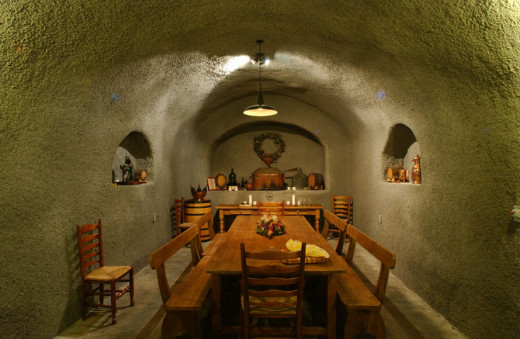
What is the deal with events & tastings in Napa?
Keeper of the Napa Valley Spirit-The Winery Definition Ordinance
The ordinance that regulates winery events and tasting activity in Napa is called the Winery Definition Ordinance (WDO) and originated in 1990. This ordinance gives wineries the authority to host events and pair wine with food as part of a wine marketing, education, etc. event. But the rules state that wineries may host functions only if they can show they’re directly tied to the marketing of their wines. The second issue addressed in the WDO is: “Tasting By Appointment Only”.
We will address these two issues separately in the context of small luxury meetings in Wine Country.
Many people ask why some wineries in Napa have signage that says, “Tasting By Appointment Only”. This is part of the WDO mentioned above and pertains to winery tastings at wineries that came into existence after 1990. But, not to worry; let me explain.
Because Symtrek Partners focuses on small (approximately 25 and fewer participants) luxury meetings in Wine Country, we are not impacted by the “By Appointment Only” restrictions. With constraints on time inherent in business meetings, visits to wineries must be scheduled anyway, i.e. By Appointment Only. Further, no luxury meeting participant wants to compete with “open to the public” tasting room guest that arrive by tour buses. Other wineries, existing prior to 1990, are grandfathered to have public tasting rooms.
What about having an event at a winery? Wineries are specifically prohibited from hosting weddings, wedding parties, anniversary events or any parties that aren’t considered directly linked to the marketing of wine. Again, small corporate events of say 25 or fewer people would most likely not be impacted by this restriction. Especially, as wine would be a central theme of the meeting at a winery. So, go ahead and explore small wine cave dinners.
You are probably still asking what is the logic of the WDO? Napa County’s WDO limits commercial activities in Napa County’s agricultural areas by ensuring that wineries focus almost entirely on the production of wine. The County does not want to build a commercial industry that puts agriculture/wineries in a support role. This is a double edge sword. But, if you are wanting a small luxury meeting with an agricultural ambiance and remoteness only Wine Country offers, the WDO ensures a rural feel well into the future.
As an aside, in 1968 the floor of Napa Valley, all 38,000 acres, was designated as an Agricultural Preserve and is the only such designation in the US today. The mountains and hills around the Napa Valley floor have been designated as an Agricultural Watershed. The watershed designation encompasses more than 100,000 acres.
Cheers!
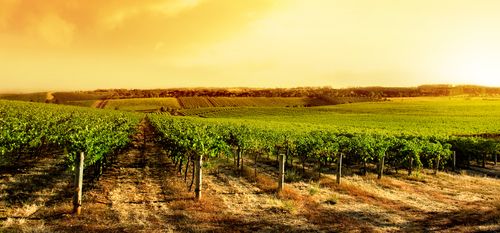
How do you make a bottle of wine worth, say $500?
With Jeff Yates and Mark Heinemann
Jeff has been in the wine business in Wine Country his whole life so I posed the question to him: What makes a bottle of wine cost $500 to $1,000? Now understand, that is a different question than: Is a bottle of wine worth $500 or even much more? Jeff says the short answer to the first question is: perceived value, costs of the finished product, quantity produced and quality of the winemaking processes.
As a point of reference, we are not talking about auction pricing. For example, in the U.S., Sotheby's sold at auction, 3 bottles of Château Lafite-Rothschild that fetched a cool $232,692. William Koch paid $500,000 for 4 bottles of Bordeaux Vintage 1784 and 1787. These 4 bottles are reported to have been wine originally owned by Thomas Jefferson. The most paid for "drinkable" bottles of wine sold, in the U.S., again at auction, for $167,500-7 bottles of Montrachet 1978. Last month, May 2011, a 1945 Burgundy went for $123,899.
The most expensive bottle of wine Jeff has consumed is the Screaming Eagle Cab which is a $750 bottle of this "cult wine". "I truly appreciate this wine," commented Jeff. On the other hand, he sells much more expensive wines to his U.S. customers. Recently he sold a three liter bottle of Grace Family Cab at $10,000. Another bottle he had was a 750ml which sold for $3,500. "The most expensive I've ever had in the store was a 1992 Magnum of Screaming Eagle and that was a $25,000 bottle," said Jeff.
But, enough of the wine 'war stories', let's examine how a bottle of wine can get expensive by starting in the field.
First, you must consider whether the wine comes from an established winery or a start-up. Let's assume the winery owner is starting out fresh; new winery and a small vineyard of their own. For land suitable for planting, you will be paying approximately $200,000 per acre in today's market. So now you have your 11 or so acres and you then need a facility for equipment-crush, fermentation, barrel storage etc. So, let's call a small respectable showcase winery a $4 million investment. Now you are ready to wait more than 6 years before your $500 bottle of wine is ready for prime time. Prime time is defined as a period when the wine is rated and written about to help you create a reputation.
The better the grapes the more they cost. Prime example of this is the famous Beckstoffer To Kalon Vineyard near the Mondavi Winery in Oakville. Granted this is a unique situation, but these grapes are in high demand. Andy Beckstoffer can and will price a ton of cabernet grapes based on the price per bottle that his customer will charge. The price per ton can be $10,000 or even $20,000. Yes boys and girls, you get what you pay for.
Other factors impacting cost in the field depends on who you select as your vineyard manager (if you own your own vineyard) or who manages the vineyard where you will buy your grapes. There are 'rock star' vineyard managers such as David Abrue and others who probably command more money than others. Then you get into vineyard certification such as certified organic or Biodynamic/Demeter.
There is also the situation where you want to limit the production of your vines. The theory here is that if you limit your production, then the quality of the remaining fruit is better. So, instead of 4 or more tons per acre you are down to 1.5 to 2 tons per acre.
When it comes to picking the grapes, the grapes for better wines are hand-picked as opposed to machine involvement. Hand-pick grapes require more labor and more time, therefore more cost. In addition, for some of the higher priced wines, the grapes are picked in lower boxes so as not to crush the grapes at the bottom of the container before de-stemming. Coming from the field, the grapes for higher priced wines are run along a conveyer belt towards the de-stemmer. This conveyer belt is manned by people who pick out things that you do not want to go into your wine, such as, leaves, rotten or dried out fruit or anything else that impact quality. Then the grapes are fed into a de-stemmer, carefully so as not to abuse the grapes. Another process that adds quality to the wine as well as costs; the grapes are fed onto a sorting table where once again workers go through the grapes looking for stems that the de-stemmer didn't get and for leaves or anything else that was missed, further adding to the cost.
Some other issues to consider: the winemaker, and good winemakers are expensive. Even when they are only consultants and not on staff, their costs add to the cost of wine. Names like Bob Levy, Phillip Melka, Thomas Brown and others are well known; they make great wines, and using their name helps sell the bottle. Some part-time consultants can cost $30,000 for 4 days of consulting services during the year. There are winemakers turning out 90+point wines in Napa, working for a winery, that make $250,000 per year. "I knew an owner of a vineyard who told me that between his vineyard manager (well known) and winemaker (well known) that he had to sell his wine for at least $100," said Jeff.
New oak barrels add costs. My go to expert on barrels is Mark Heinemann who is the sales genius for Demptos USA. He seems to have forgotten more than most will ever know about barrels. But sufficed to say, barrels are a science. Demptos is a French company and they have a lab that does nothing but test the chemistry of the oaks used in their barrels. If a wine maker wants a certain result in the barrel aging process they can specify their desires and Demptos will give them an oak from their sources that will deliver the results; smooth tannins, great aromas and even specific bouquets. Mark says, if a winemaker wants a tight grained white oak, air dried for a minimum of 3 years and from a specific country; they call that barrel a "Reserve Barrel". That category barrel will cost a winery about $1,250 each.
Now you have another issue such as the amount of time the wine spends in the barrel. Then once it is bottled how long does it stay in the bottle. Many wineries will released their 2009 Cabernet in May 2011; Silver Oak will not release their 2009 Cabernet until 2013. Time is money!
What kind of glass will the wine be bottled in? An average wine bottle with wine weighs about 3.3 pounds; some of the premium bottles weigh in at over 4.5 pounds. Then there are corks to buy. Premium wines use longer and better corks. A top quality cork can cost $1.00 each.
Then there is the label, the neck foil, advertising and marketing, although on some of the cult wine's, advertising and marketing aren't important, but getting a good rating is the issue. Label design can cost $20,000 and printing of small run labels can cost $1.50 per label with 2 labels on a bottle.
The wine's Score and Availability...
Scores - Wines highly rated by the Wine Advocate or Wine Spectator Magazine, or Steve Tanzer, and the Wine Enthusiast and other publications add value, but the first two are still the most important.
Scarcity - Once a wine is highly rated, then the wine sells out quickly. Add to that, what if they only produce 125 to 300 cases of this highly rated wine. Everyone wants highly rated wines. To get access to that wine you might join the winery's mailing list, but once the mailing list is full then no one else can get the wine. Therein lies the dilemma. There are some wineries with waiting lists just to get on the mailing list that could take you up to ten years.
Once a winery has a wine that gets good scores and has a full mailing list, then the price can start to go up. The winery knows that at a higher price some of the customers may drop off the list, but there are more customers waiting to join who will pay the money. For example, Screaming Eagle Cab at $750 can get closer to $830 a bottle by the time you pay for tax and shipping. Harlan is at $500 a bottle, and many others are at $300+.
There is an interesting phenomenon that happens when a wine reaches the 'cult' status. Some people are willing to pay more than the wines original selling price. There is a secondary market out there that used to see prices for Screaming Eagle go up to $2,500 a bottle, a bottle of Harlan's moves up to $800 and $900 a bottle. Since the economy hasn't been doing as well, some of these secondary market prices have dropped, but still Eagles have gone for $1,500 or more.
Still after having tasted some of these wines, I still walk away wondering, was that worth $500 a bottle, $300 a bottle, or even $200 a bottle? Wine lovers today can buy a darn good case of wine (12 bottles) for $500. Taking this logic further, it is still about perceived value. The sommelier at Aureole Restaurant in Mandalay Bay Resort in Las Vegas confirms that they have a bottle of wine at $14,000 and swear that it will sell for consumption. They claim that wine in this price range can be moved around to sister restaurants around the world. Right now, Asian markets are seeing strong demand for high priced wines.
In summary, there are a myriad of ways a winery can establish and enhance value. Here is our recap:
-Cost of facilities and land
-Cost of fruit if a winery buys high quality varietal fruit
-Fruit impacted by the vineyard management and growing costs
-How select the winery becomes in selecting the clusters
-Hand selecting and handling the fruit once cut from the vine brought to be crushed in smaller containers
-Quality of the barrels
-Quality control of the fermentation process
-Length of time wine stays in the barrels add to storage expense
-Quality of the packaging and labels
-Amount of cases produced to spread the cost across
-Cost of marketing/sales and G&A
-Professional costs-winemaker, wine consultants and ratings of the vintage
-But the most important element: what is the perceived value of the finished product in the eye of the consumer?
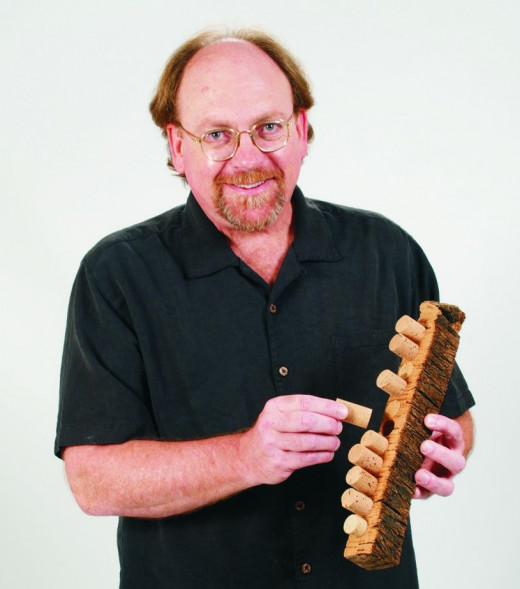
Wine Corks Are Rocket Science
Peter Weber-Director-Cork Quality Council
Every time I start one of these human interest stories about what goes on, out of the public eye in the Wine Country, I get absolutely intrigued by the commitment of the people. I contacted a cork trade group called Cork Quality Council in Sonoma to explore if there was anything interesting about corks for the next "People" story. Peter Weber answered the phone and 35 minutes later my head was spinning with all the facts about corks. It almost seemed like a discussion about open heart surgery was elementary compared to the genealogy of cork. Here is a guy who has been in the wine industry for 30 years; loves the business and especially corks.
I do not think my interest in cork is an aberration; just not frequently reflected upon. As an aside, to illustrate a point, a few years ago I ask a golf pro to speak at a sales meeting-told him to speak on anything about golf. For one hour he was riveting. His subject was, "The lowly 5 iron". Corks are the equivalent of the 5 iron.
Natural cork has been associated with the storage of valuable foods and beverages for thousands of years. Ancient Egyptians, Greeks and Romans referenced cork as a preferred material for stoppers used with wine and olive oil. So, corks are here to stay.
Let's get some myths out of the way. First, squeezing a cork after removing it from the bottle generally doesn't tell you much about the wine. Secondly, smelling a cork after you pull it will not tell you much either (more on this later). Thirdly, if a bottle leaks the cork is bad. Probably not true, most likely it could be the actual bottle is not according to original specifications. Best bet--taste and smell the wine; now you know everything.
While we are on issues of bottles, Peter says there are technical requirements for filling bottles, such as temperature and volume.
"The Cork Quality Council has standards for the inspection and handling of cork that our members must adhere to. For example, cork dimensions, moisture in the cork, and the incidence of off aromas are all monitored. Cork lots that test below standards are removed from distribution in our markets," says Peter.
But now to the cork itself:
Though the Cork Oak can flourish in many climates, the conditions that favor commercial use lie in a fairly narrow swath that cuts through Western Europe and Northern Africa along the Mediterranean coast. Most cork used in the US comes from Portugal. These cork trees are never destroyed during the cork harvesting which happens every 9 years. These trees can and do live at least 200 years. Obviously, cork is a sustainable product.
It seems every year there is renewed discussion about aroma/smell problems caused by TCA (I call it tainted cork). That is why there are strict cleanliness standards in handling all cork. TCA doesn't cause any illness but to real aficionado's they claim to be able to smell TCA contamination.
"This is not a simple process to get the right cork for the right bottle. There are approximately 13 steps to get to the end result that starts with the bark plank." And, like most things, there are varying grades of natural cork. That is why wineries can find corks that cost $0.25 all the way up to $1.00. Peter, the consummate salesman for the cork Council tells me natural cork helps wine age. He says, "It softens the tannins, helps bouquet, and adds to complexity."
Last question to Peter is about cork versus screw cap versus synthetic. This is not a good way to end a discussion with a guy who has lived in Wine Country for 30 years, is a purist and generally has a low threshold for things that pain his spirit. But, he humored me. Bottom line, plastic does not hold up as well to age as natural cork, but it is cheaper…a lot cheaper. Screw caps are also less expensive and have been around for a long time, but I think they lack the romance of a fine quality cork.
Maybe more than you wanted to about TCA:
In 1999 the California based Cork Quality Council initiated research into how to measure TCA in corks and how TCA would affect bottled wine. Because TCA is one of the most potent substance that can be smelled - the average trained person can detect as little as 6 parts per trillion - most scientific methods could not easily quantify its presence. Typical sensory analysis basically determined that TCA was either "present" or "not present".
Using sophisticated gas chromatography methods, researchers were able to detect TCA to the level of 1 part per trillion. This allowed cork companies to evaluate corks in a much more useful way. Of corks that were considered "clean" - cork companies could now see which had TCA at levels just below sensory detection and which were actually free of TCA.
The California methods have since been adopted by cork companies and manufacturers all over the world. The Cork Quality Council has seen reductions in the incidence of TCA by over 85% since it initiated its QC program in 2001. Many wine experts now estimate that the incidence of cork taint is now at 1% or less. Some have concluded that cork taint is no longer a major problem for the industry.
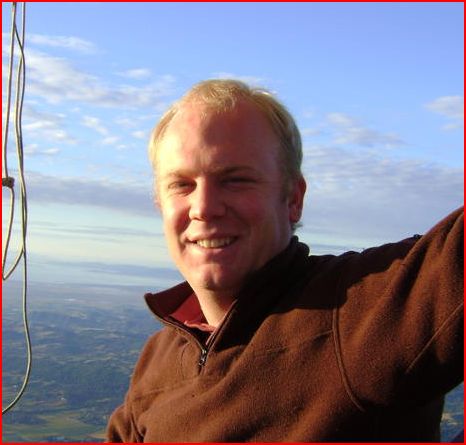
Hot Air Ballooning In Wine Country
You haven't seen Wine Country until...
It takes all kinds of interesting people to make a company thrive. So that same concept must apply to Wine Country. In making Wine Country an exceptional destination for a small luxury corporate meeting, it takes diverse interests and personal commitments to the customer to make Wine Country work. Gabe Gundling was born in Napa, went to high school in Napa and has a BS degree from UC Santa Cruz. He lives in Napa because, "I like the smells, the sounds and the people who live and work here," said Gabe. "I can't think of any place I would rather live and I can't imagine doing anything other than what I do; fly balloons for people who are in awe when they see Napa Valley from the air at a leisurely pace."
His experience with Napa Valley hot air ballooning started 25 years ago when he was 6 years old Gabe, with his younger sister Julia, stood in an open field behind their Napa home with a handmade sign that read- "Balloons Land Here". "We yelled up to the balloon pilots and passengers asking them to descend
so we could see the balloon up close." Eventually, balloon pilots started descending and Gabe and sister would yell at them, begging for free rides.
Today Gabe is a partner in the company (Napa Valley Balloons) who's pilots he yelled at to land in his backyard. With 1,200 hours to his credit and being 29 years old he knows right where he wants to stay.
The peak season for ballooning in Napa starts in May and runs through the October harvest. Probably 80% of their business is during this time period. With 5 balloon companies in Napa Valley, it is competitive so they are focused on maintaining their equipment and providing a structure service that exceeds customer expectations. With a perfect safety record they obviously enjoy a stellar reputation.
When her father was President of the United States, Chelsea Clinton made a trip to Napa and wanted Napa Valley Balloons to give her a ride over Napa Valley. "Secret Service was everywhere. They did personnel background checks, equipment checks, our FAA records checks, the whole thing. All for a flight that lasts about 1 hour," Gabe elaborated. They have had Matt Lauer, MSN, Oprah and other notables onboard for ballooning over Napa.
Some facts about hot air balloons:
-A balloon's life span is about 700 hours.
-A balloon envelope is made up of 2 different fabric's, the lower portion is fire treated material.
-Weight of a balloon is approximately 1,800 pounds empty.
-Passenger capacity is from 2 to 16.
-Balloon costs are approximately $110,000.
-Largest balloon manufacturer is Cameron Balloon's in England.
Gabe is one of the many good guys in Wine country who loves the thrill of ballooning over Napa Valley.
A balloon experience, as part of a corporate group, will consume approximately 2.5 hours; 1 hour actual flight time and the remainder is taken up by transportation to the launch site and return after landing. Figure this cost to be approximately $240 per person. The total distance traveled is 5 miles during the 1 hour aloft.
All flights depart in the morning when the air is cool and still. To accommodate meetings they should be scheduled in the afternoon.
After landing, we recommend a brunch at Ãtoilé. The restaurant is located at Domaine Chandon and the chef there is also a guy born and raised in Napa. The restaurant is Michelin Rated and is highly recommended by Michael Bauer who is the food critic of the San Francisco Chronicle. As everyone appreciates, Domaine Chandon makes some outstanding sparkling wines for over 30 years from the 1,000 acre vineyards they own. Just another opportunity to experience all that Wine Country has to offer, and besides you have to eat.
This is not meant to be a sales pitch, but if this sounds like one please forgive me. A recent report claims that the biggest draw to Napa Valley is food not wine.
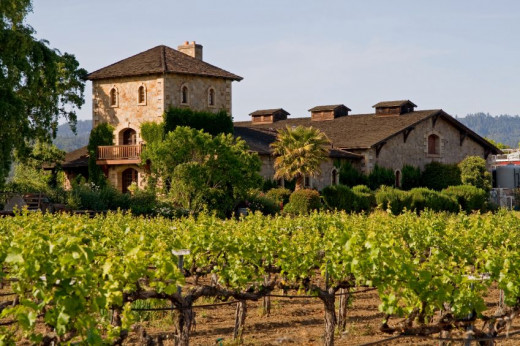
Wine Country Defined
A story appearing in Business Insider
http://www.businessinsider.com/wine-country-define...
Business Insider
Great Stuff on Amazon - From a friend of mine
This is a great fun read, especially if you like knowing about people of wine country and their struggles in days-gone-by. Vivienne Sosknowski is a great person who is committed to helping people understand Wine Country. A very nice lady who lives the experience in Wine Country. It is also out in paperback. Get it and enjoy it.
Stanford Univ. says CA Wine Country being destroyed by climate
Published in LA Times, 30 June 2011-"Warmer temperatures threaten Northern California vineyards". Now Global Warming is going to lay waste to Napa and Sonoma Counties...be nice to find a cheap piece of property in Napa. Sell to me I like warm weather. Tongue in cheek, OK?
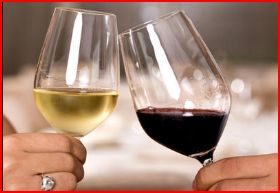
Wine Country can help you stay healthy too..
Another benefit of wine found
Reported by Sylvia Booth Hubbard
Moderate social drinking reduces the risk of developing Alzheimer's disease and other forms of dementia by 23 percent, according to researchers at Loyola University Chicago Stritch School of Medicine. Their analysis of 143 studies found that drinking wine was better than beer or liquor.
There are additional benefits of moderate alcohol use, according to the Mayo Clinic. Moderate drinking may...
Reduce risk of cardiovascular disease
Lower risk of dying from a heart attack
Reduce risk of strokes
Lower risk of diabetes
Reduce risk of gallstones
Here's a toast to our health!
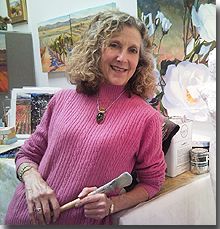
What out of the ordinary activity can you do to build moral and lasting memories?
May we suggest a painting...with the help of a Symtrek Partners artist.
Team Relationships as an exercise to build productivity through a cohesive group of people seems to be a misnomer as applied to senior management. But what can we do for an executive, his client or spouses that is out of the ordinary? How about each participant painting a Wine Country scene in say 2-3 hours?
“Because, Symtrek Partners focuses on small, luxury meetings in Wine Country our efforts in Team Building on behalf of clients are focused on experiential elements that are not the usual,” says Steven Lay, President. Yes, there are a plethora of ways, in Wine Country, that can lead management in experiencing things together such as: crewing on a sailboat, culinary assignments where a group can experience their results together, wine blending, etc.
“Let’s take a new approach to building a team dynamic; think outside the box,” said Lay. Unless a person was an art major in college, chances are most people have zero experience in capturing something they enjoy looking at, such as a vineyard or winery or ocean, and transferring that minds-eye image to canvas. So, why not spend a couple of hours after meetings, going to a vineyard or winery, and paint something you see that interests you.
Symtrek Partners works with an artist that is a recognized landscape artist that has done a wide range of Wine Country paintings. Kay Carlson is professionally trained and makes a living doing art instruction and selling her work in galleries throughout Northern California. This Symtrek Partners program is very hands-on and requires Kay working individually with each participant to achieve a finished masterpiece. This process takes from 2 to 3 hours.
Depending on the medium (oil, acrylic or watercolor) the cost varies from $100 to $350. But, a group of 8 participants working in a watercolor medium would cost approximately $100 per person. “The artist/instructor provides all the necessary materials. Everyone can leave Wine Country having painted a scene that memorializes their corporate meeting in Wine Country,” says Lay. “It probably would be more interesting than a coffee mug to remember your last corporate meeting.” Ideally, after your masterpiece is finished you can retire to the wineries wine cave for a fabulous dinner with the wineries signature wines. Also, don’t forget, if spouses and guests are in attendance, this is a great experience for them to participate in the Team Building experience.
How old do you think the drink called wine has been around?
Archeologists have found grape seeds dating from 8000 BC in Turkey, Syria, Lebanon, and Jordan. This is considered the oldest evidence of wine-making yet found.
As a rule of thumb...not what you think that saying means.
Before the invention of thermometers, wine-makers would test the temperature of the liquid by sticking their thumb in it, to see if it was the proper temperature for adding the yeast culture. This became known as “ the Rule of Thumb”.
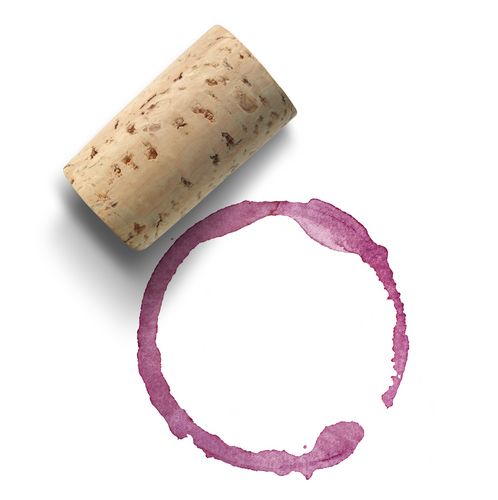
Wine has made us civil for a long time!
Plato was fond of saying that the minimum drinking age should be 18. From then until age 31, a man should only drink wine in moderation. After 40, he could drink all he wanted “ to cure the crabbiness of old age.”
Hippocrates, the Father of Medicine, included wine in every one of his recorded remedies. He undoubtedly had a lot of happy patients.
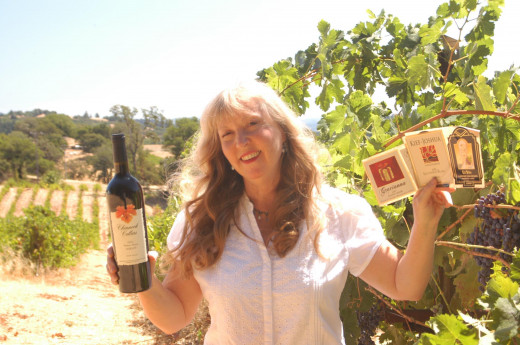
More to labels than meets the eye.
Ms. Harman we want a label
Holly Harman-Wine Label Design, Inc., winery owner, wine marketing consultant
Healdsburg, CA
Some companies have gone the route of developing a private ‘label’/blended barrel of wine for future, highly unique, corporate gifts. (A barrel is 20+ cases of wine.) But, once you get the help from an award winning winemaker at a prestigious winery, you will need a ‘label’. Here is a lady that knows art, winemaking and branding—Holly Harman.
Recently, Symtrek Partners wanted a label done and we started asking around. There are probably 6 good designers in Sonoma and Napa. But, Holly’s name always came up in conversations around high quality label design that would say a lot about a company, a wine and a brand; just from looking at a label.
What starts the process? “First, I must manage the clients’ expectations about the process; it is not a simple process, and good results take time—about 2 to 6 months” says Holly Harman. She continues, “I have done labels for wineries all over the world and language, time zones and familiarity with the process, on my part and the clients’, will dictate the time requirement.” But, ultimately, a good designer must listening to the client more than talking seems to be a good personality trait.
Secondly, “I need to know if this is a total branding assignment in which the client wants me to work on the complete image. This means I look at bottles, graphics for the closure, you know, synthetic, cork or screw cap, and all the labels,” says Holly. It seems, from up close, she needs to know what the client likes and dislikes in labels they have seen in the past. It is also important to know the varietal she is working to label. “The persona of the company, the look and feel the client wants and the varietal is really my starting point when I put pen to paper.” It is after all the clients’ vision and that is the boundaries she works within.
Her most adventurous label project was for Bray Vineyards. For a new red they wanted something that was provocative, memorable and fun. She gave them “Brayzin Hussy Red”, which has now turned into a Festival around the sketched logo of an old timey girl in a claw foot bathtub drinking a red wine. I guess it has now become a cult wine. Also, the Lost Canyon Winery was successful in a different way in that they were focused exclusively on branding an upscale image of sophistication. Both, highly successful wine labels. The most impressive label design is the one she did for the USS Sequoia Presidential Yacht. Take a look at both of these labels online.
From Best to Worst. “The worst labels I have seen are the labels that the winery owners did on their computers. No design knowledge what so ever and a very amateur look. Or worse yet, their kids designed them. You can always spot a homemade label. The really sad part is that the owners don't even know how bad it really is. Another worst; labels designed by a committee of people with no design experiences. Really sad,” says Holly. After years of doing 25 to 50 labels a year she can spot a good label.
The real perplexing and frustrating process in label design is getting the label approved by the Feds. The TTB or Alcohol, Tobacco, and Trade Bureau do not seem to be consistent in approving label design. So a good designer can save some time simply based upon historic experience of what gets approved.
In the end we all want to know what it will cost to get a label done. That is a moving target to nail down, but I think a custom label with panache for a corporate purpose can be done for $1,500 to $3,000. That should get a company through the approval process.
Holly Harman graduated from the San Francisco Art Institute and plied her skills as a graphic designer and painter for 25 years. She even taught graphic design at San Francisco City College. She has spent 8 years in the advertising business in San Francisco with clients such as Chevron, Round Table Pizza, and Lorimar TelePictures and has done the set design, writing and logo work for Gumby. Her Stepfather is the creator of Gumby. If you don’t remember Gumby your children and grandchildren will know Gumby.
In addition to her label design work, Holly and her husband own a vineyard and winery that has been producing award winning wines since 1983. Their Cab has been a consistent 92 point wine. Her son is also an aspiring winemaker who has been working under the watchful eyes of Helen Turley at Martinelli Winery.
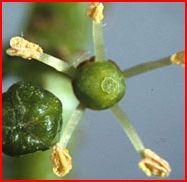
Have you ever seen a grape flower?
Short answer is probably No!
Here is a question I am sure you have ask yourself-Do Grapevines Have Flowers? The answer from Stefen Stolysiak. Brace yourself for a discussion of the birds and bees.
Although you may have never seen it, every grape does start with a flower, quite inconspicuous though it may be. A wine grape flower is considered "perfect", in that the same flower contains male and female structures, and can pollinate itself. Because of this, grapes do not rely on insects for pollination (or wind for that matter), and do not produce nectar. For this same reason, they don't need to be showy, aromatic, or colorful - perhaps this is why they get so little attention!
The 5 pointed petals are merely green, and unlike most flowers which open in the center and stay attached at their bases for awhile, grape flower petals open at their bases, and the middle stays together. The result is that the entire petal structure (calyptra) detaches at its base and falls off in one piece. This exposes the 5 pollen producing male parts, known collectively as the stamens, and the single pollen receiving female part, the pistil. The end of the pistil is sweet and sticky, and this is where pollen grains will adhere to, and grow down into the ovary of the flower and fertilize what will later become seeds. Around these seed embryos is a fleshy layer that will eventually grow to become the edible (and fermentable) part of the berry that will make a future wine so delicious.
Grape flowers do have an aroma, though many people miss it even in wine country during full bloom. That's because it's a very delicate aroma that can be difficult to notice with all the other aromas of spring. It reminds me vaguely of warm clothes spinning with a dryer sheet - somewhat floral, somewhat sweet, and never overpowering. But once you become aware of that lovely, ethereal scent, you'll never mistake it again. You'll be able to drive by a vineyard and know if it's in bloom just by using your nose!
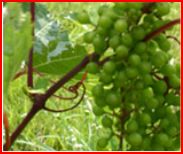
What is best...Organic, Biodynamic, Sustainable/Green produced wine
If you are a real afficianado of the environment then Demeter Biodynamic Certification is the gold standard. In Sonoma and Napa Counties there are about 22 wineries that have a Biodynamic Certification. The count can be misleading because the Biodynamic Certification is more about the vineyards-the source of the grapes. If a winery owns vineyards that is still all included in the 22.
So, what is Biodynamic Certification all about? Demeter, was the very first ecological label for organically produced foods, and remains the only internationally recognized Biodynamic certifier. It isn't Organic and it isn't about Green/Sustainable. Biodynamic agriculture goes beyond organic, it envisions the vineyard as a self-contained and self-sustaining organism. Biodynamic vineyards avoid chemical pesticides and fertilizers, utilize compost and cover crops, and set aside a minimum of 10% of their total acreage for biodiversity-water, bugs plants, and animals. The entire vineyard, must be certified and the vineyards and facilities are inspected annually. In order for a wine to bear the Demeter logo it must be made with certified Biodynamic® ingredients and meet strict processing standards to ensure the purest possible wine.
Next question: Can you taste the difference in wine produced from a Biodynamic Vineyard and Winery? Short answer is probably not. Reason being is that Biodynamics is about the terroir. If you think pesticides, fertalizers and soil supplements don't work their way into the fruit of the vine then the absence of these things will be what you get with Biodynamicly produced wine. Of course, vintage and winemakers tinkering will change the wine even more.
Then, how do grage growers protect their investment in the grape? They use the natural occurrance of 'good' bug to prey on the 'bad' bug. They use natural herbs to spray for diseases and they fertilize with natural compostings. It all works together for the good.
Look for a Biodynamic logo on the bottle and taste for yourself. The Biodynamic farming (and vineyards are all about farming) process does not add an appreciable cost to the wine. The Demeter Biodynamic Certification is .5% on 1% of gross sales for the certification. The farming expense seems to be a bit of a push.
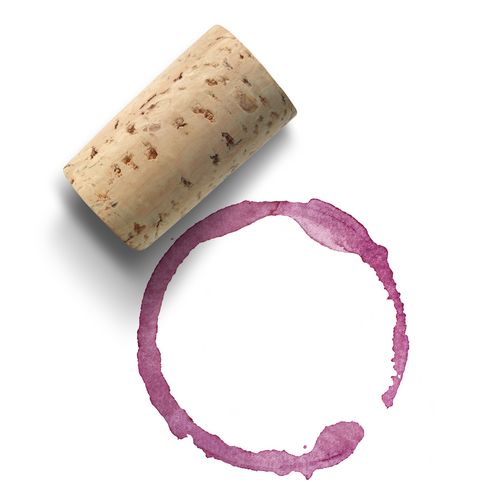
Cork is back!
Cork Quality Council climb back over plastic
My friend Peter Weber of the Quality CorK Council in Wine Country is telling me that: natural, eco friendly, romantic, great feeling, fun to pop, cork is climbing up the ladder some more. Consumers simply love the romance and history of cork in their wine bottles. There is a lot of corks and ways to get one into your bottle. But, they are still cork. The finest quality cork can cost $1.50 each or as little as $0.20.
Cork as a wine closure grew at 15% in 2010.




